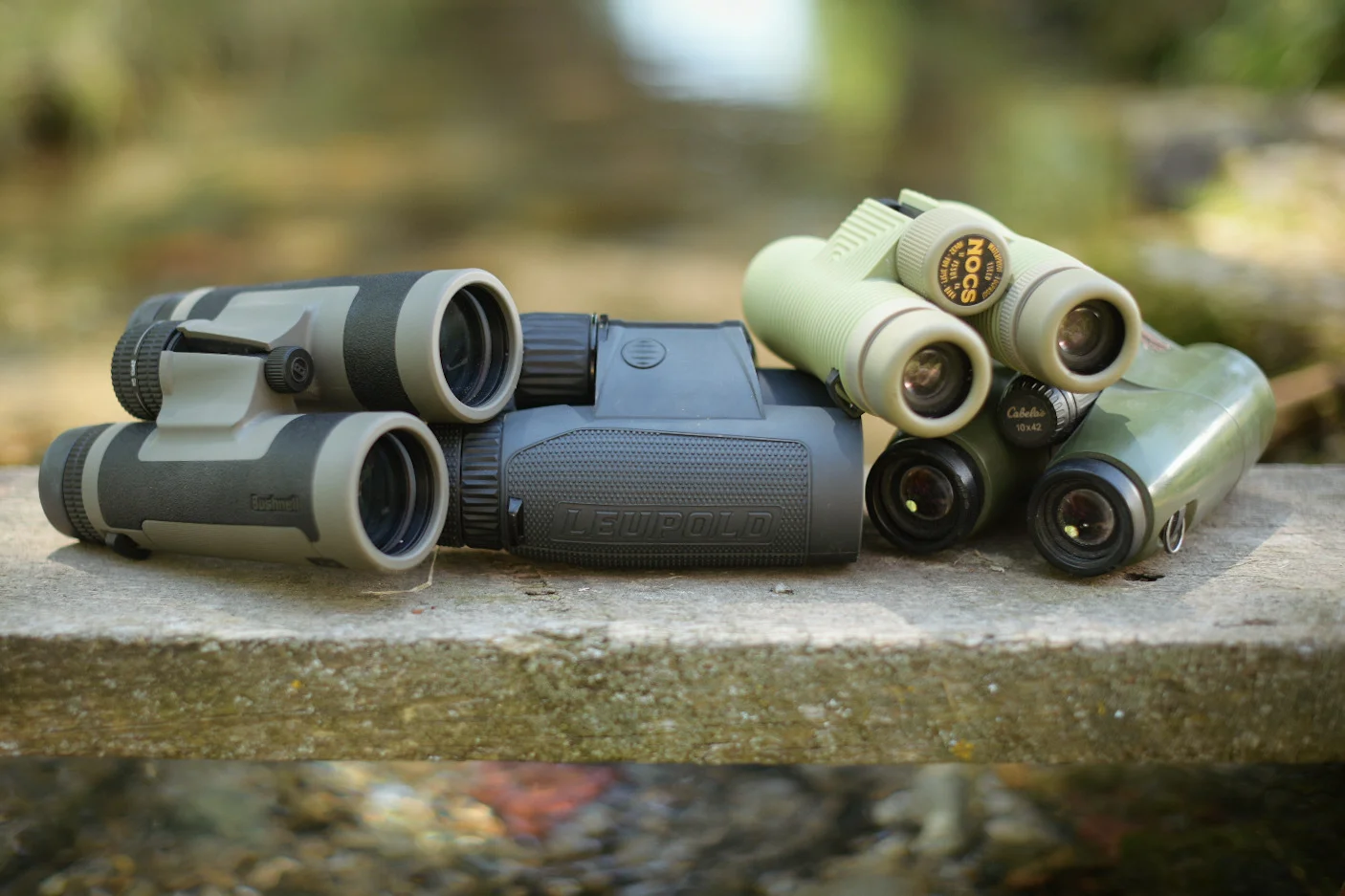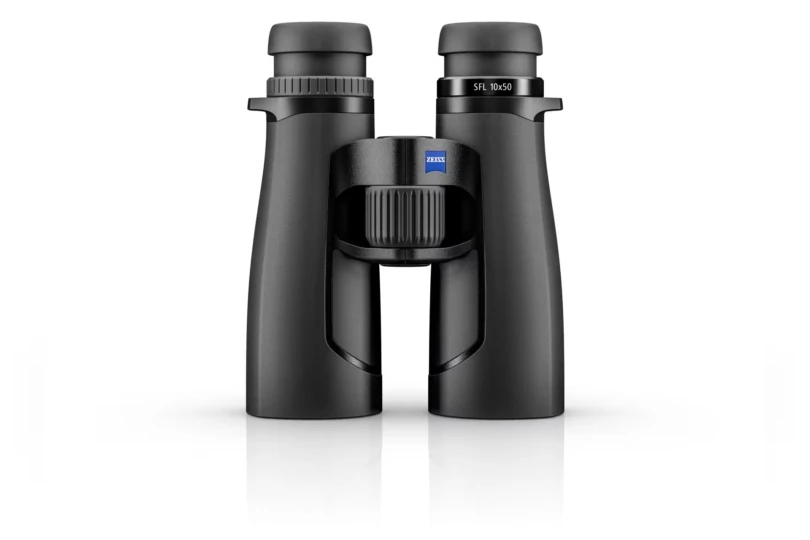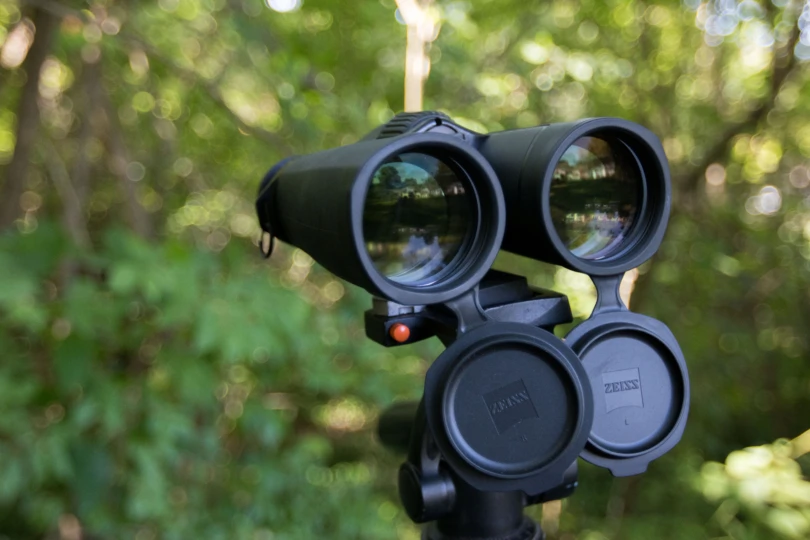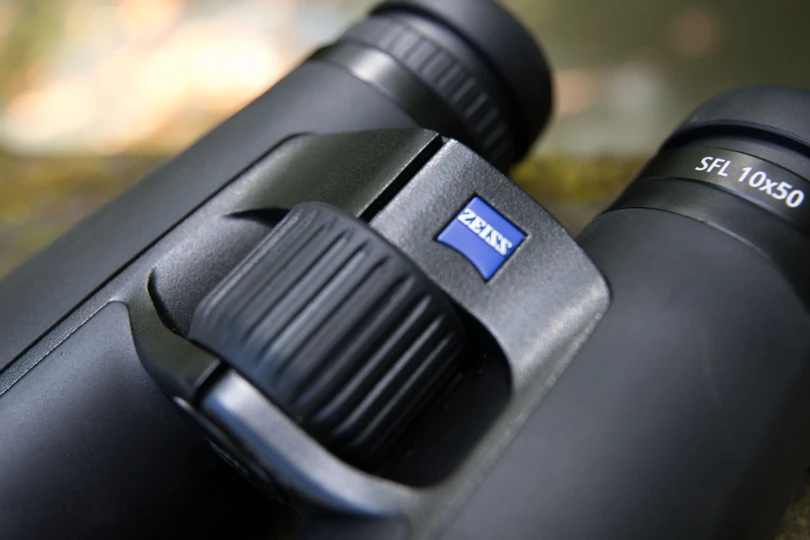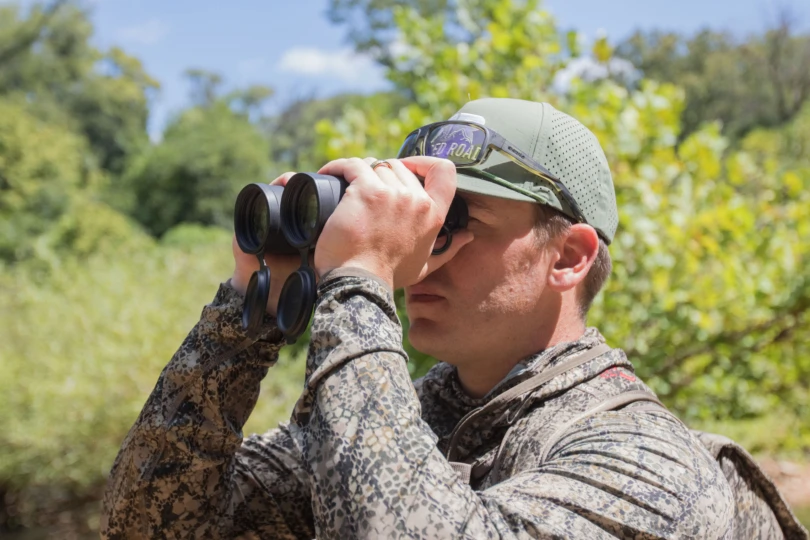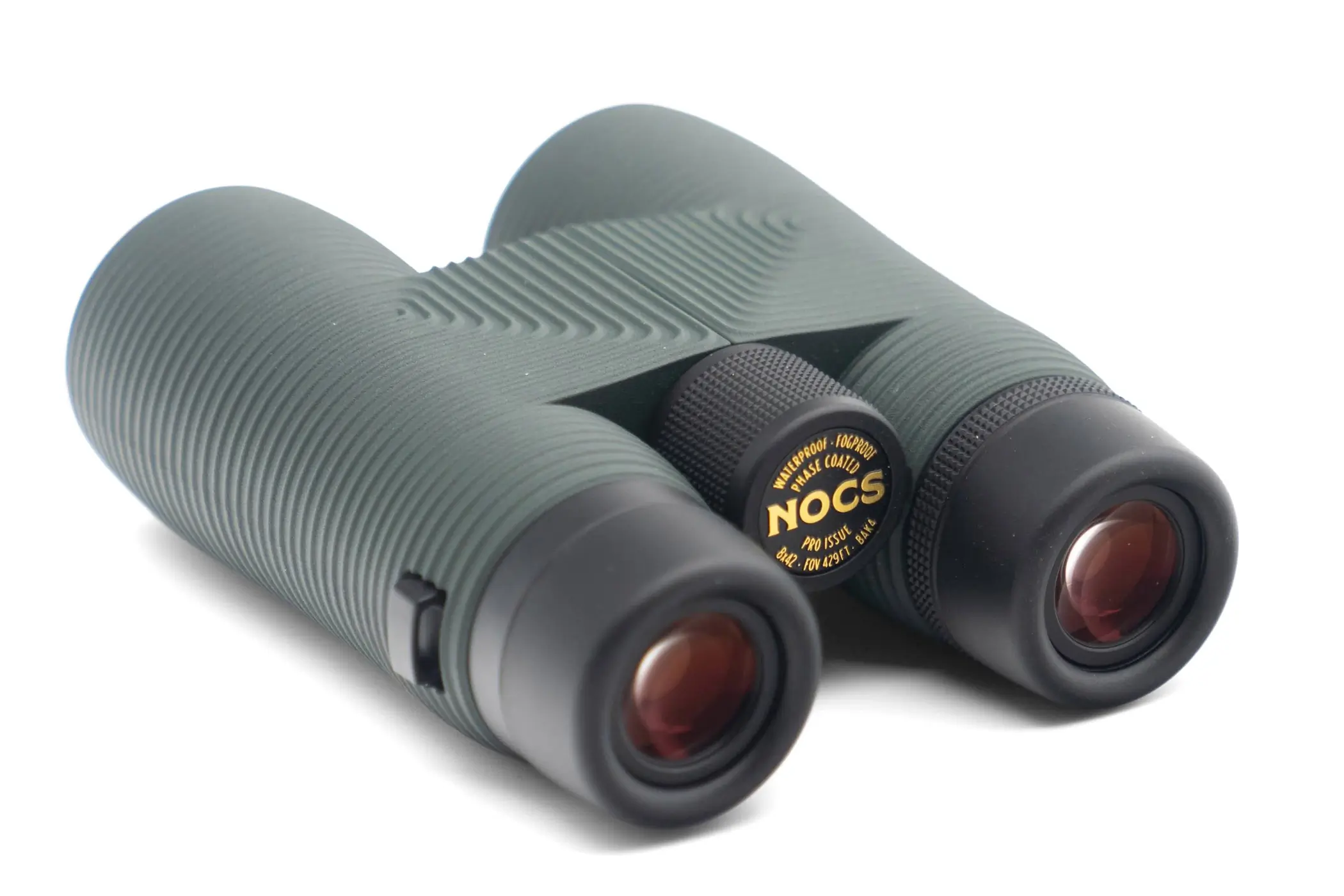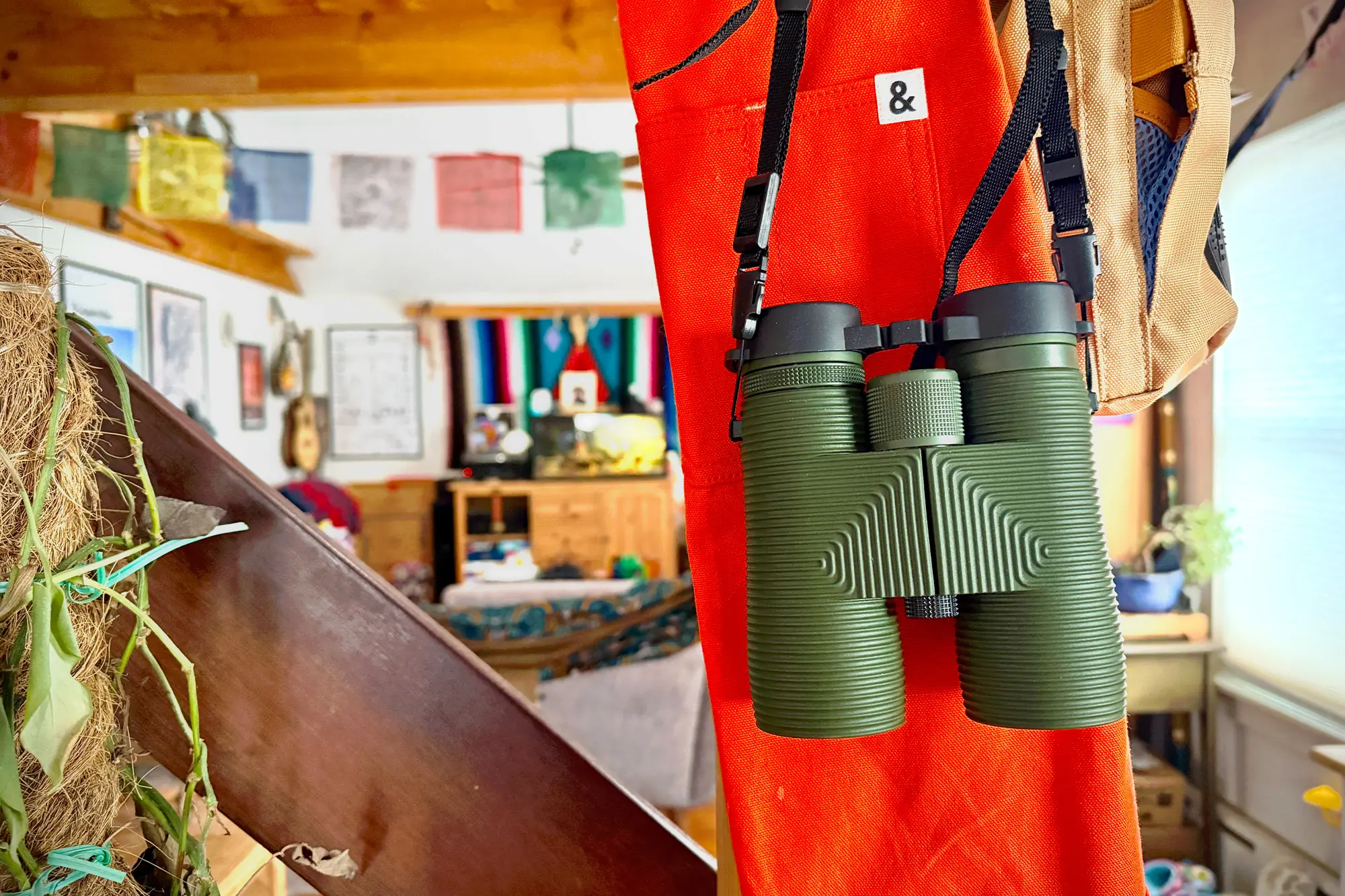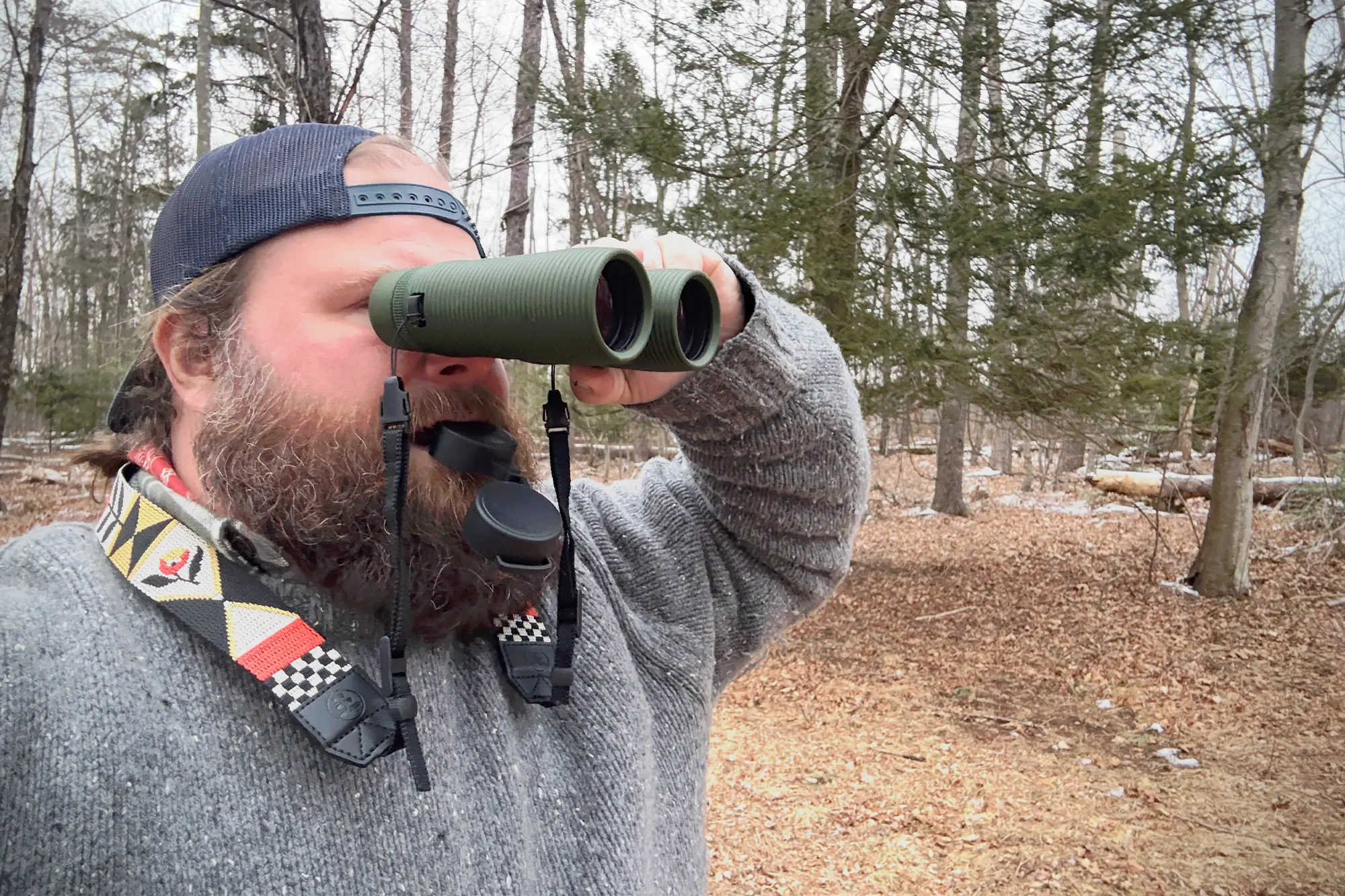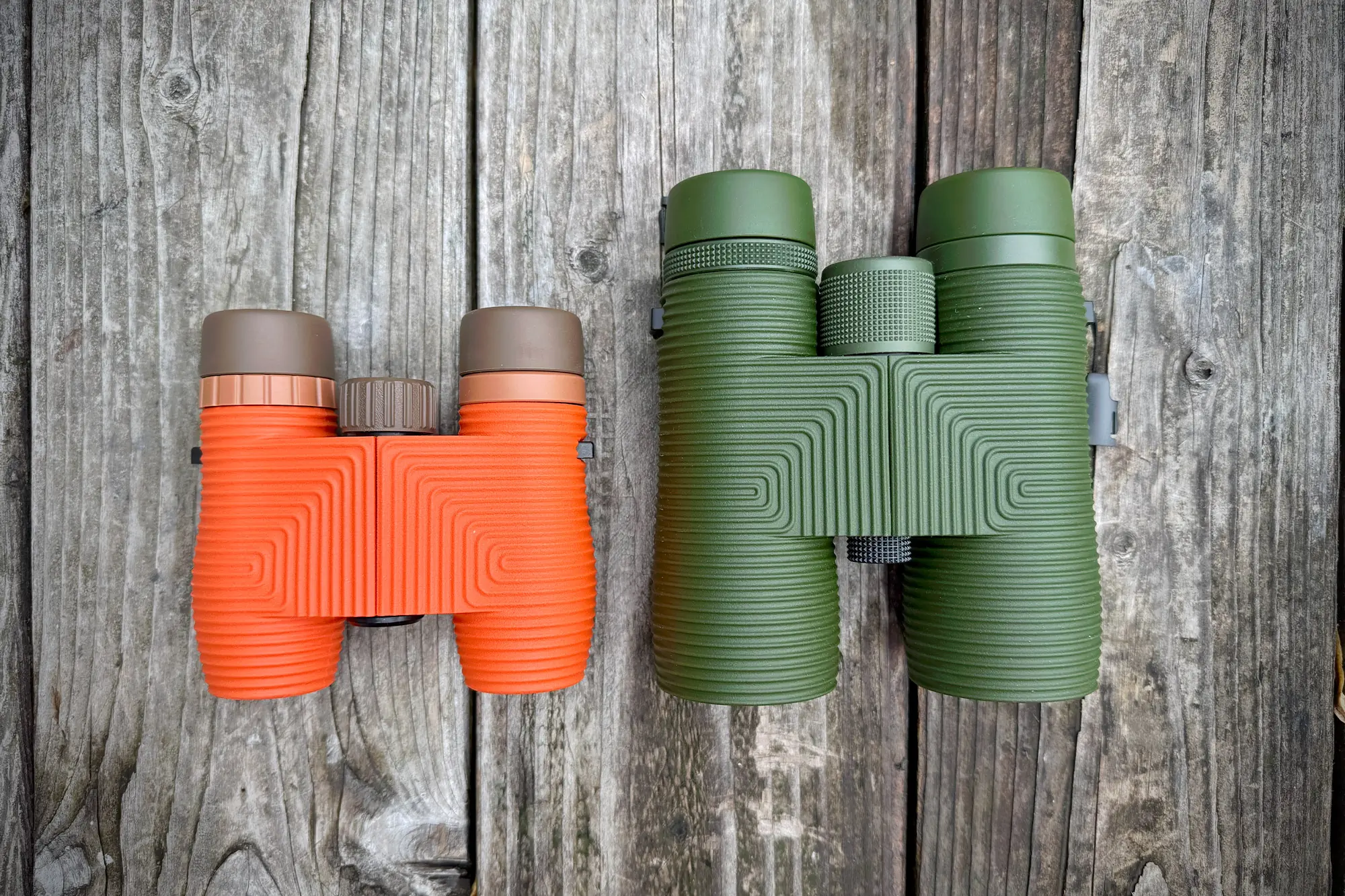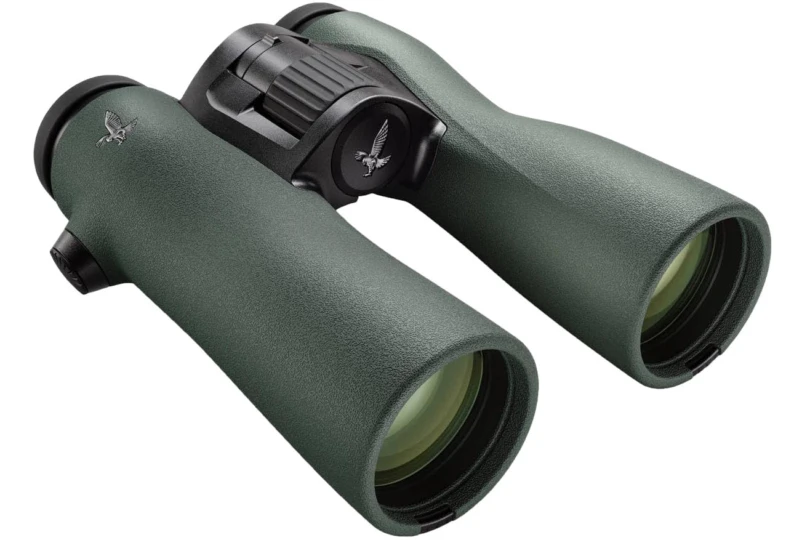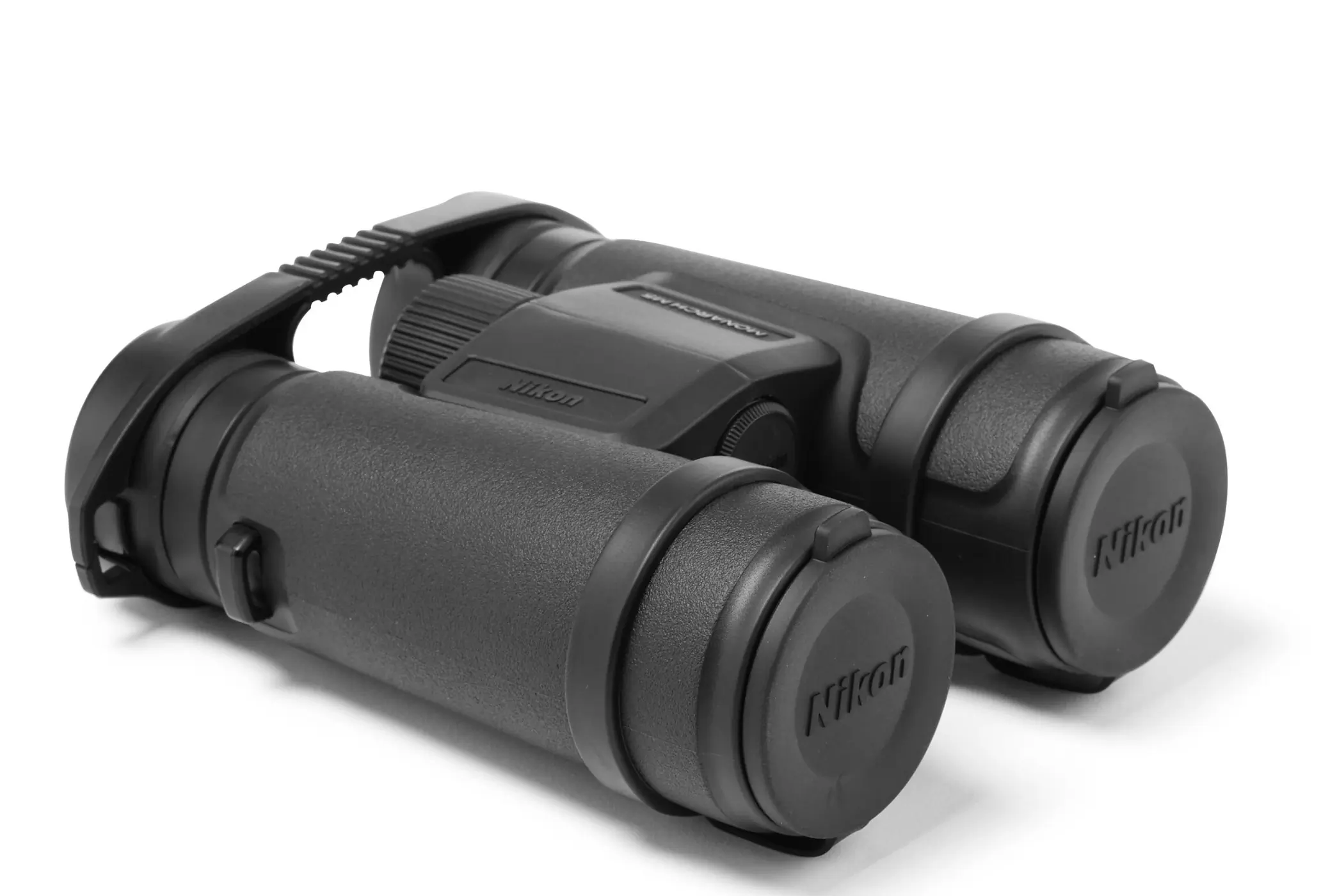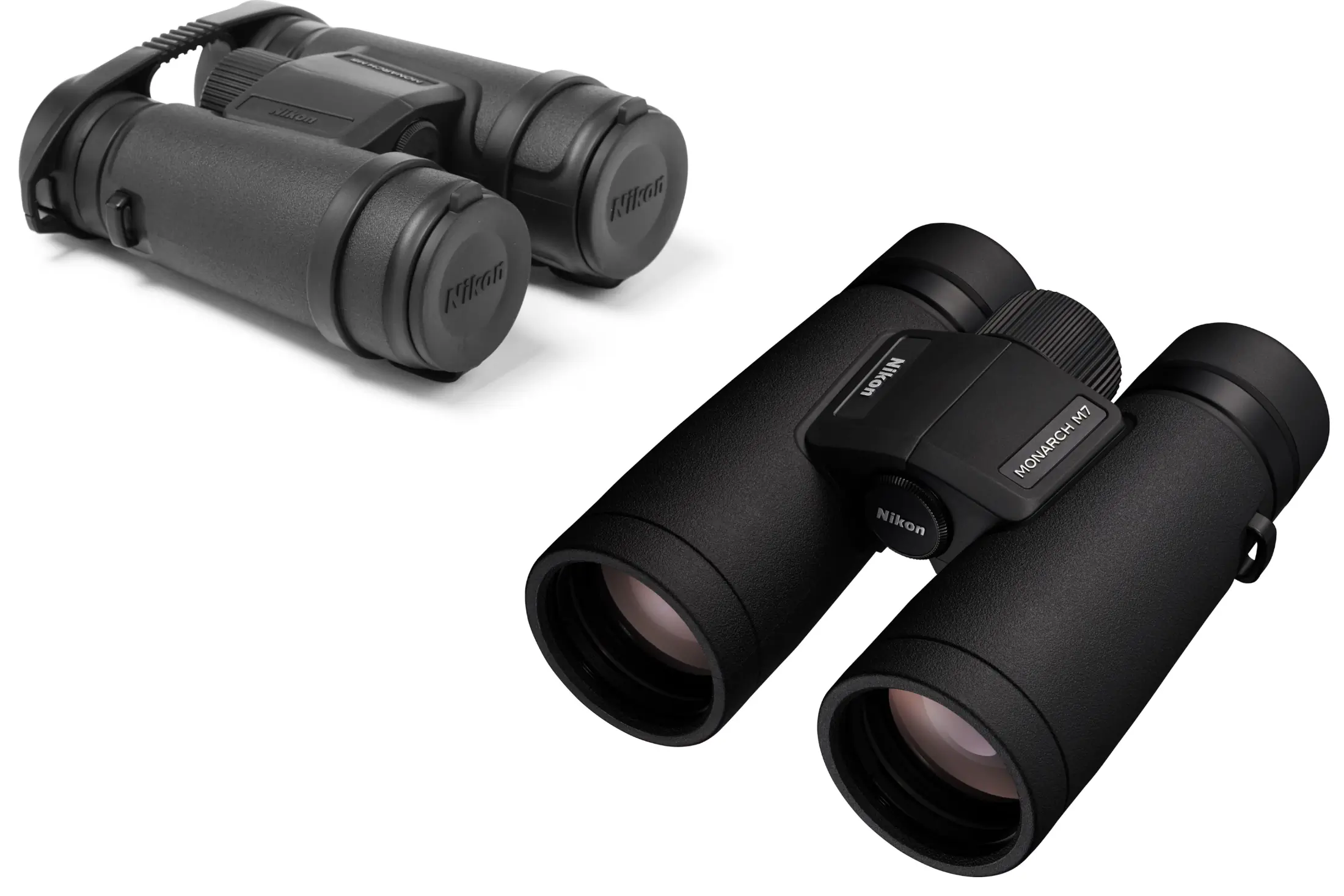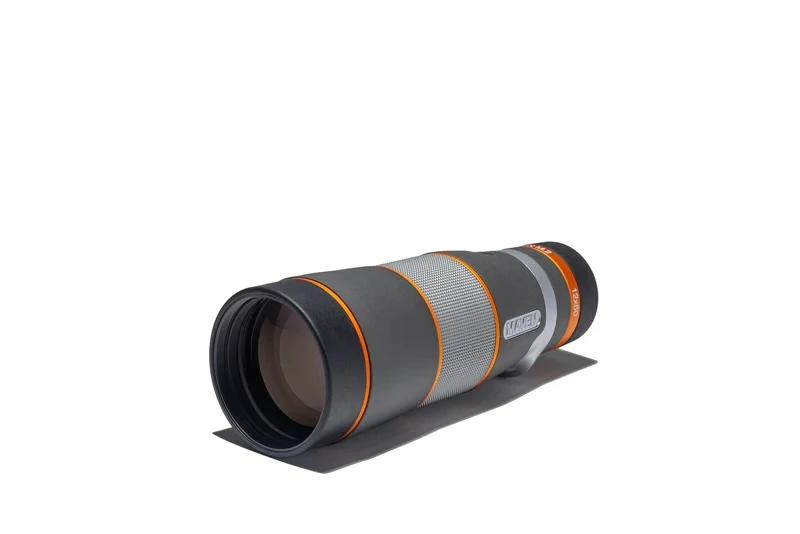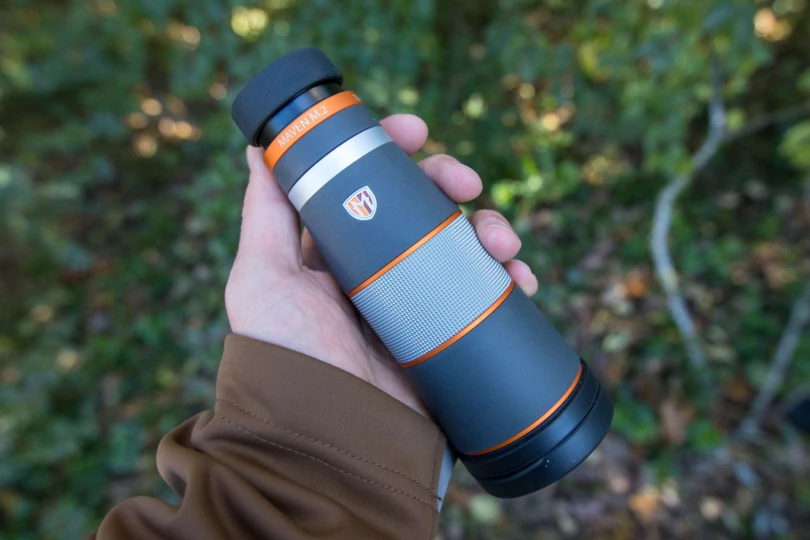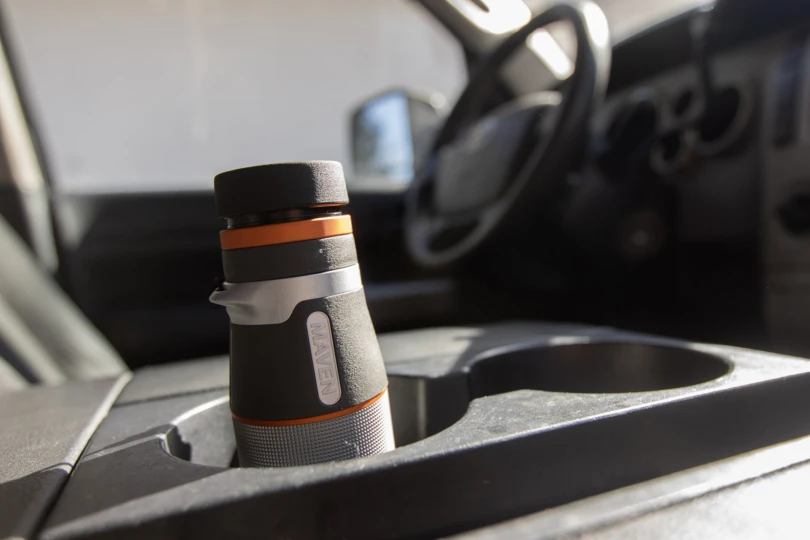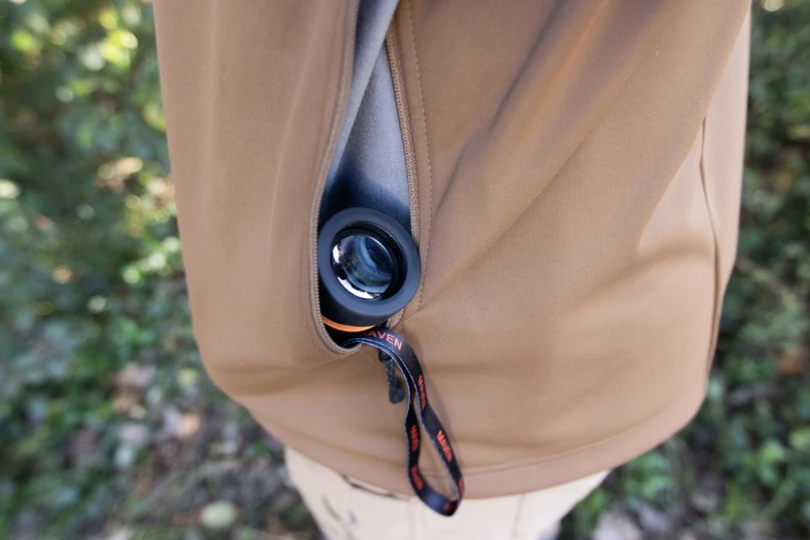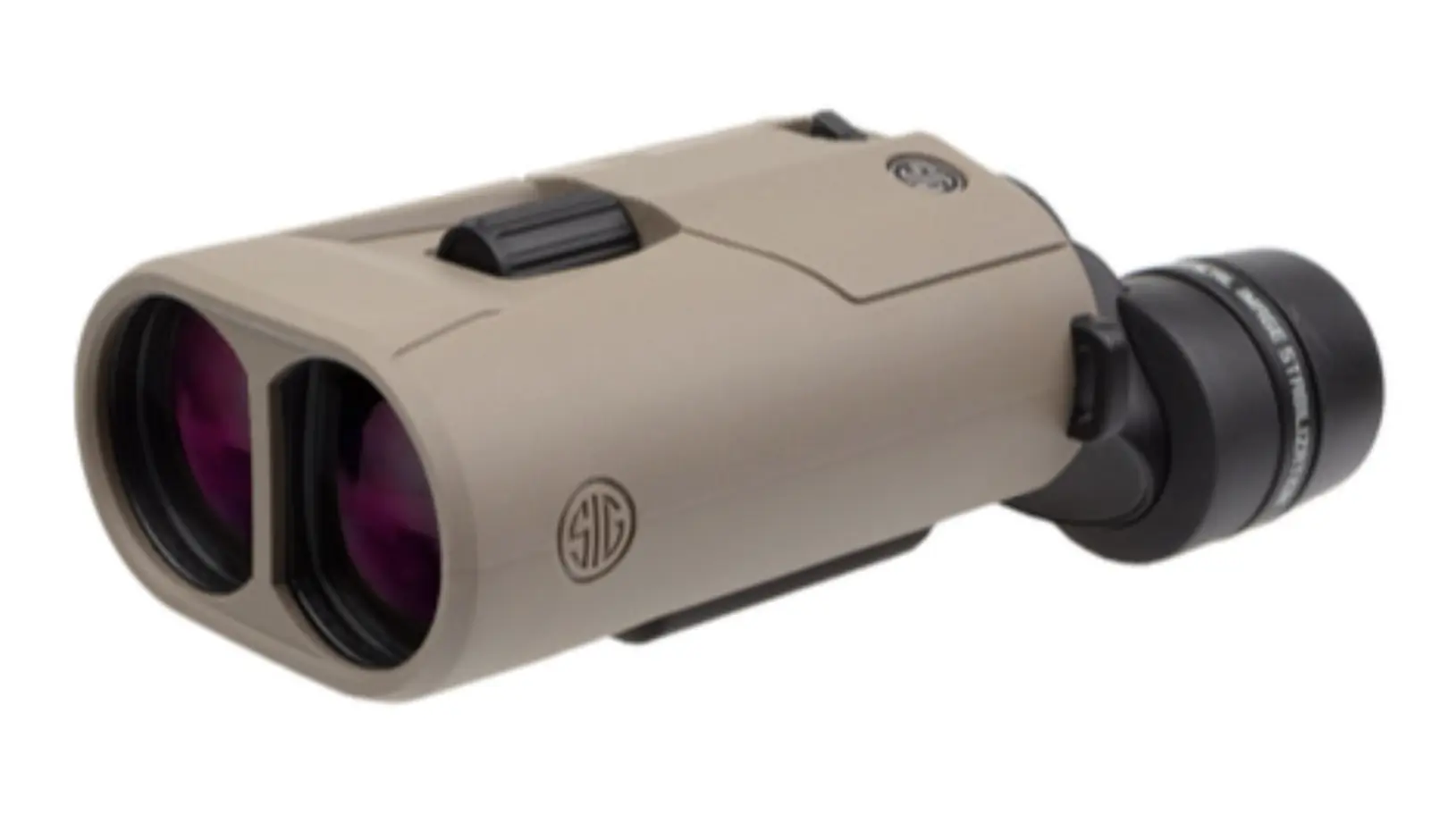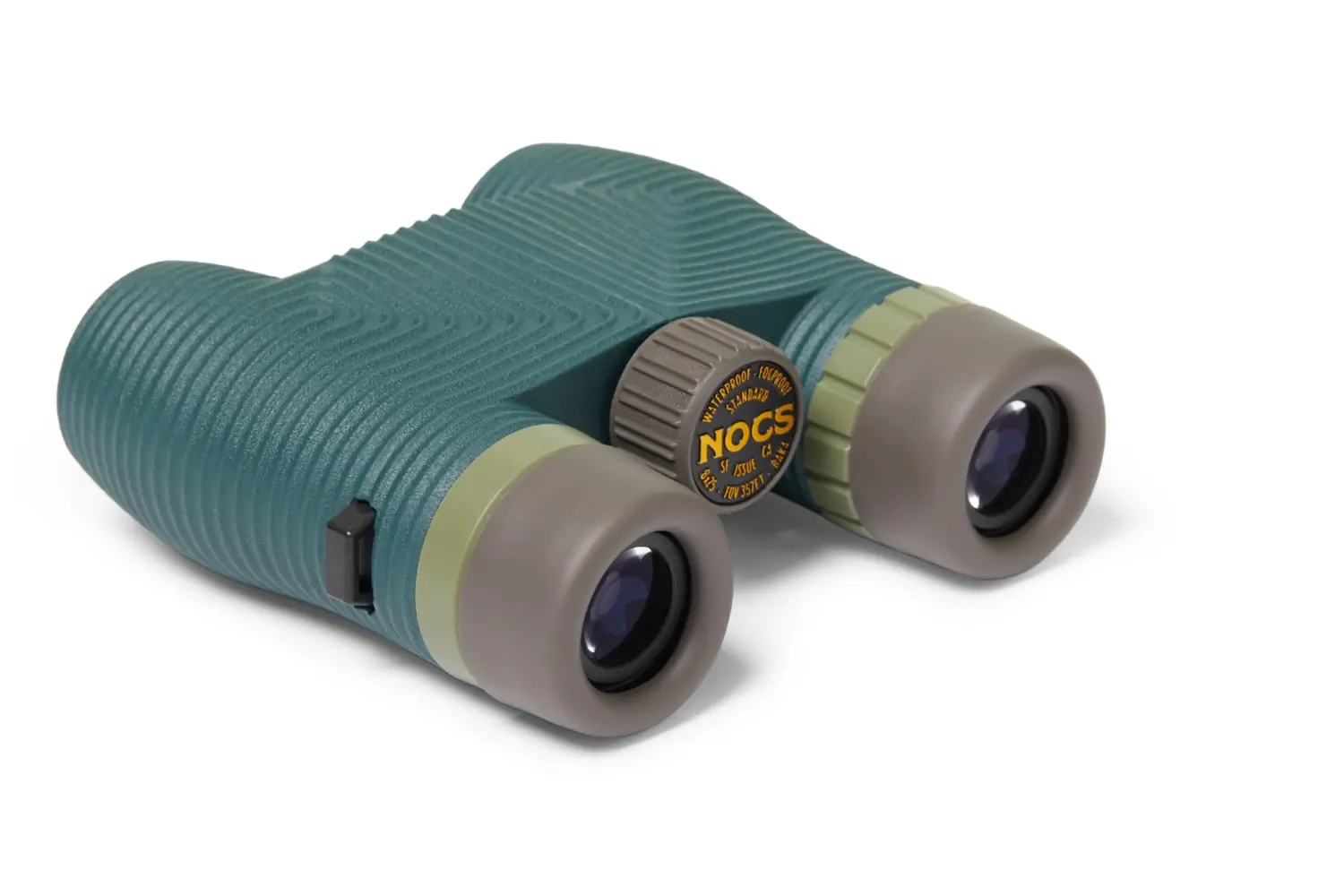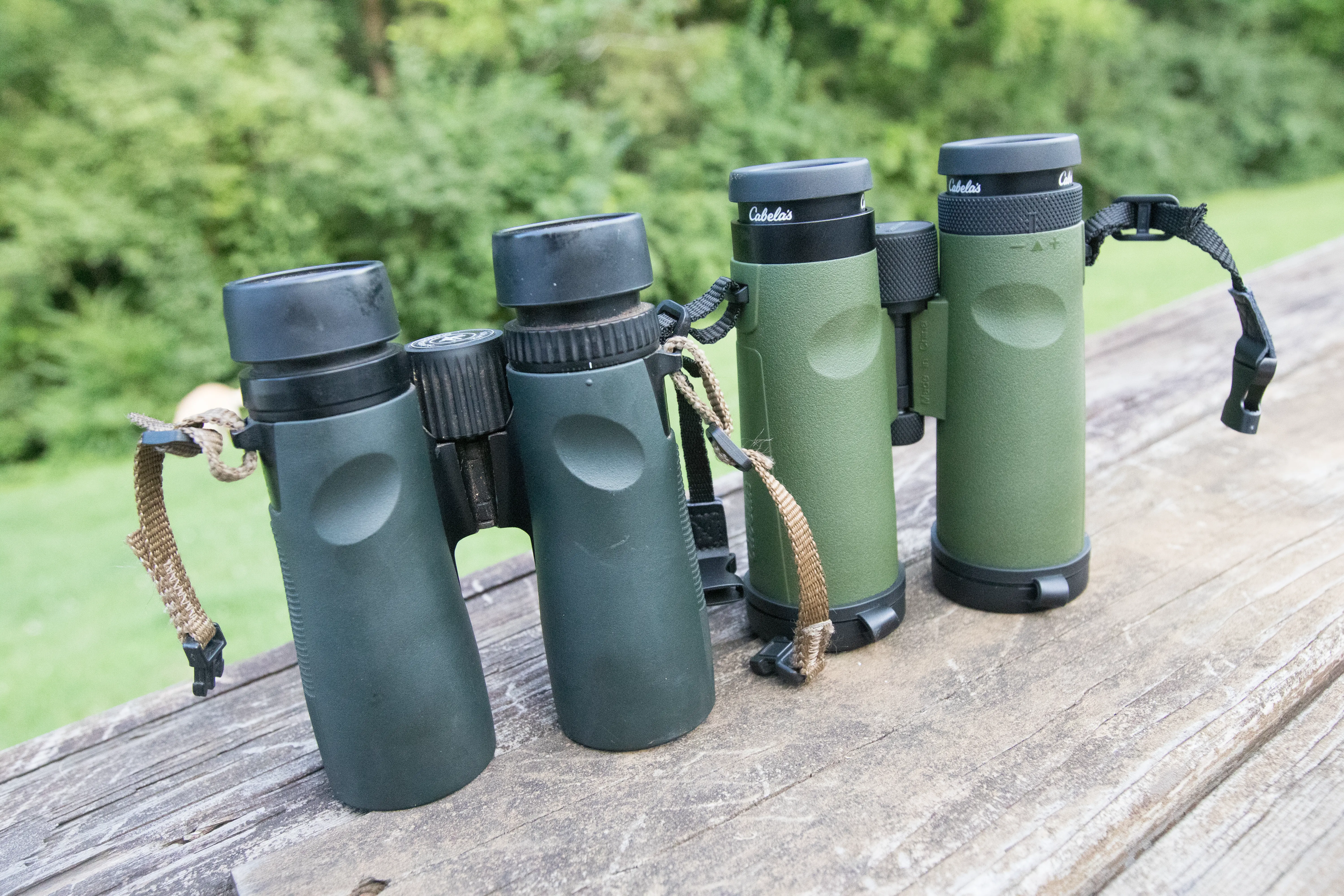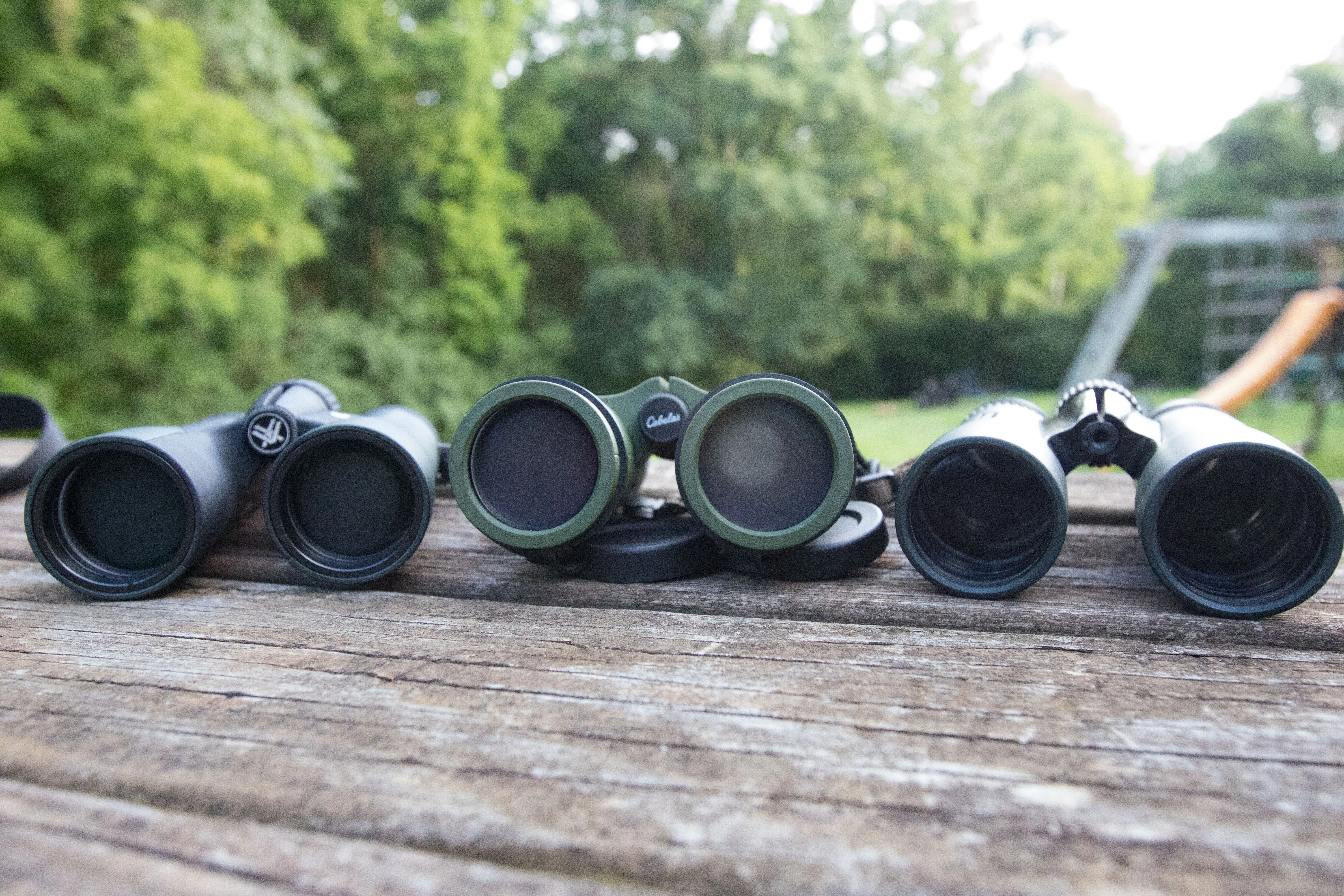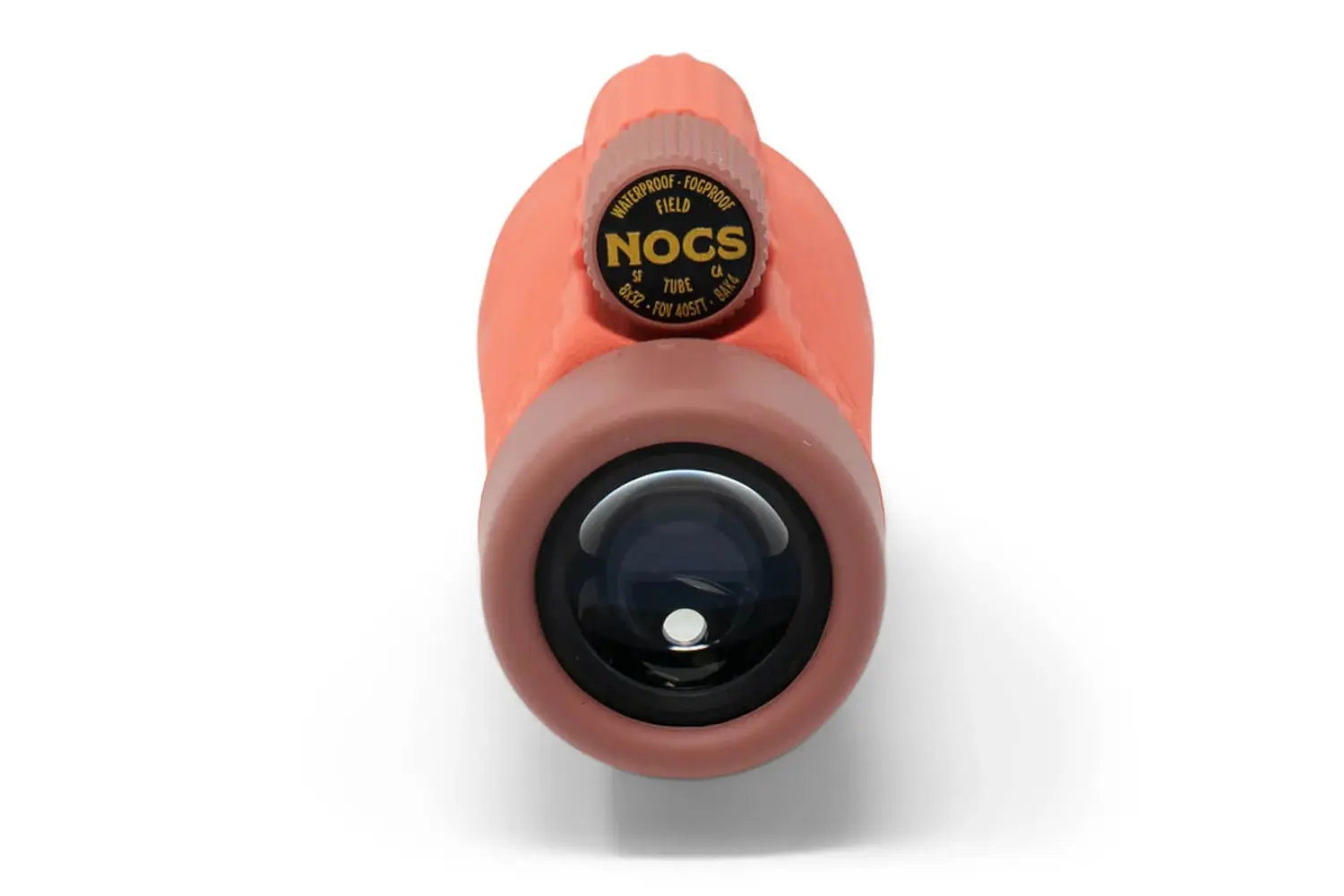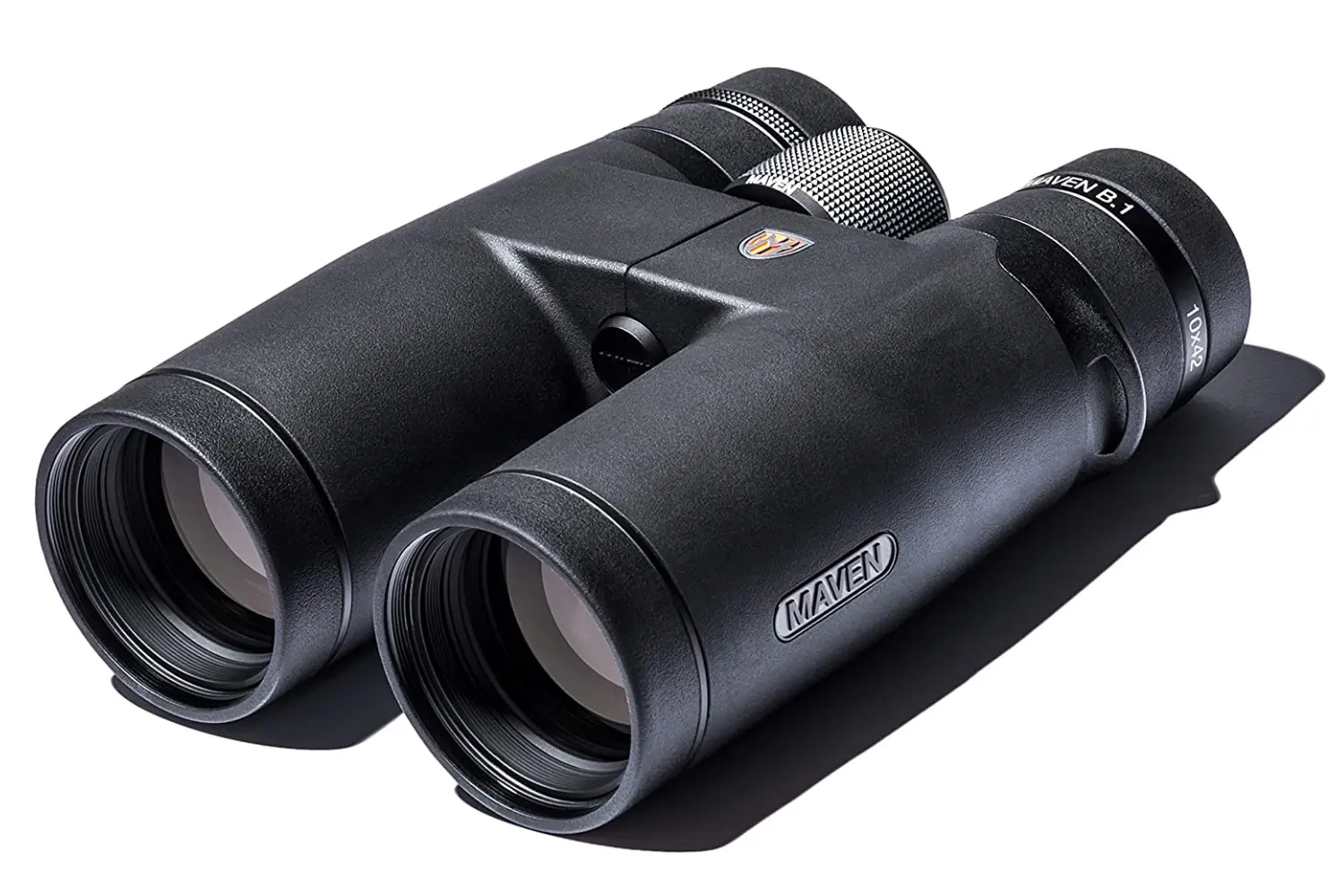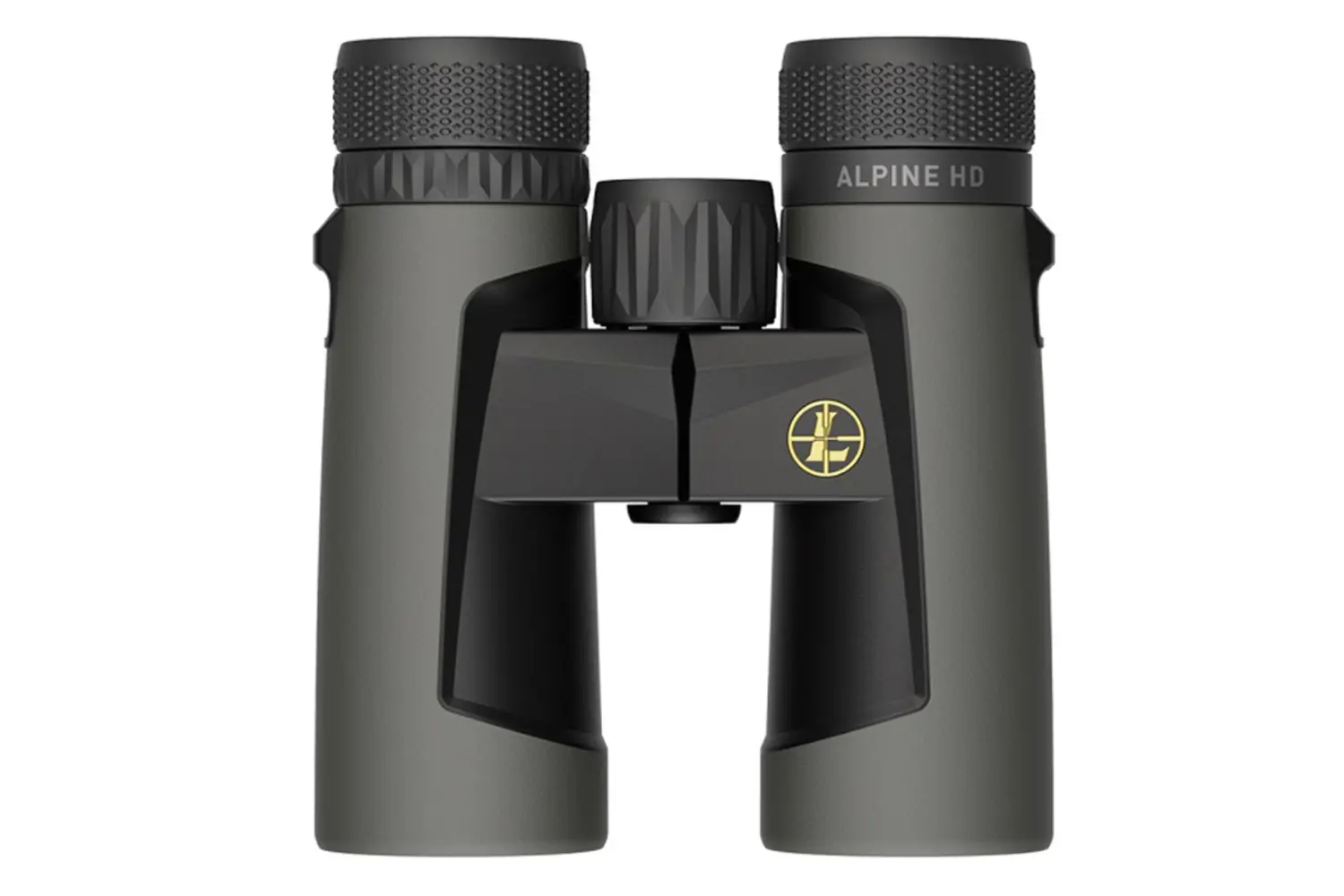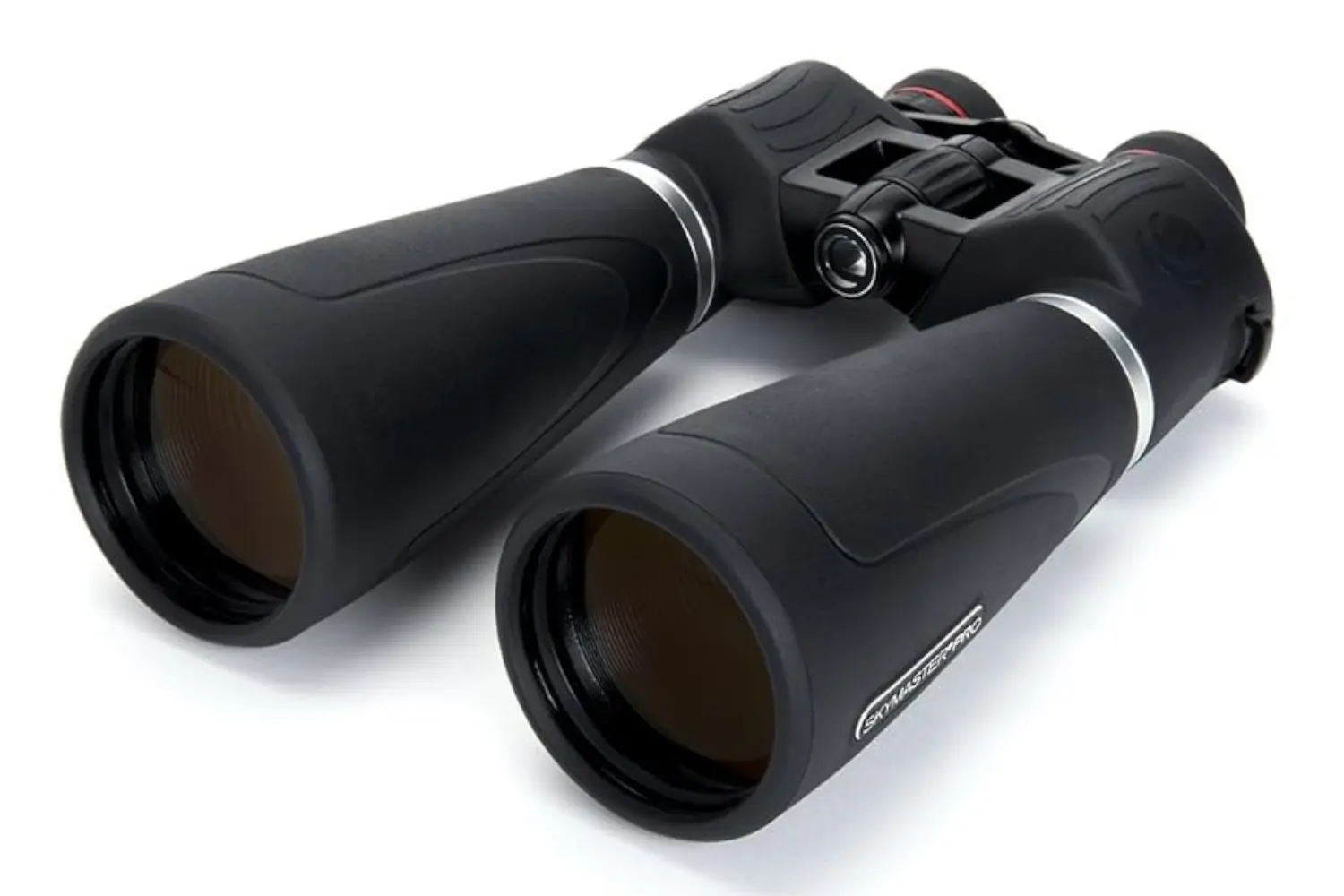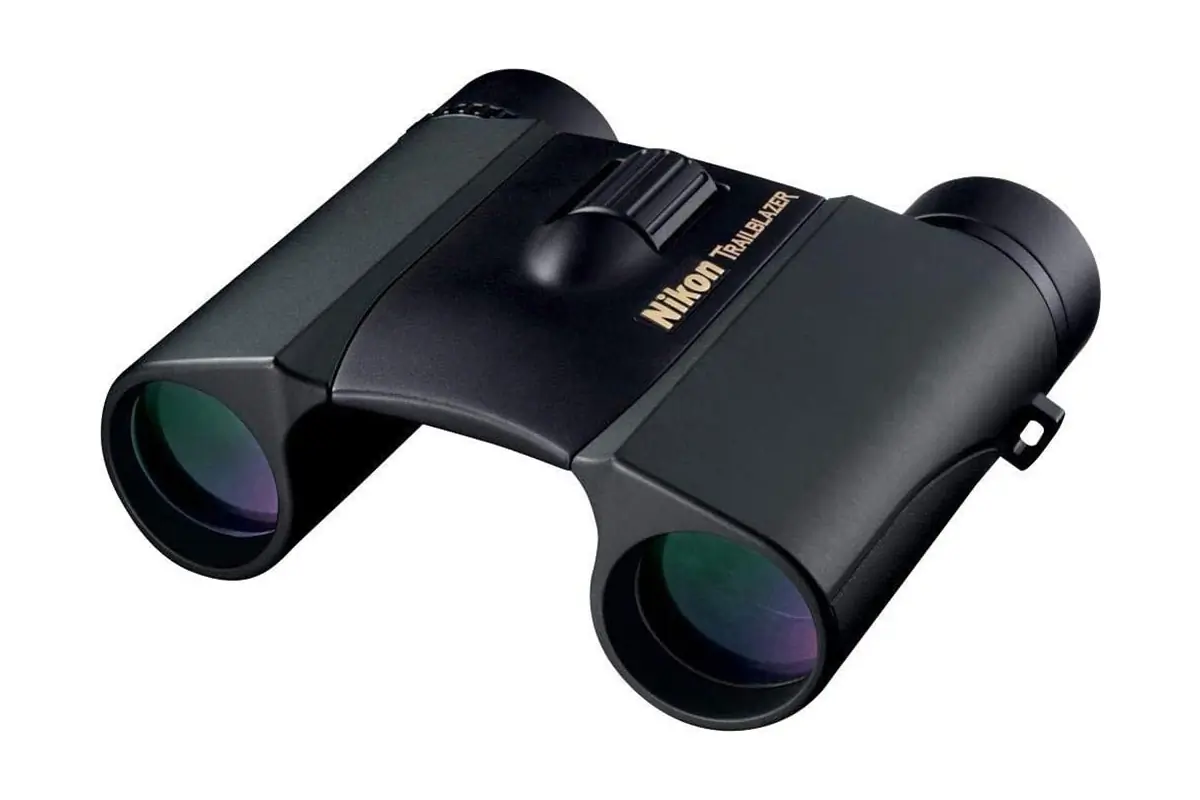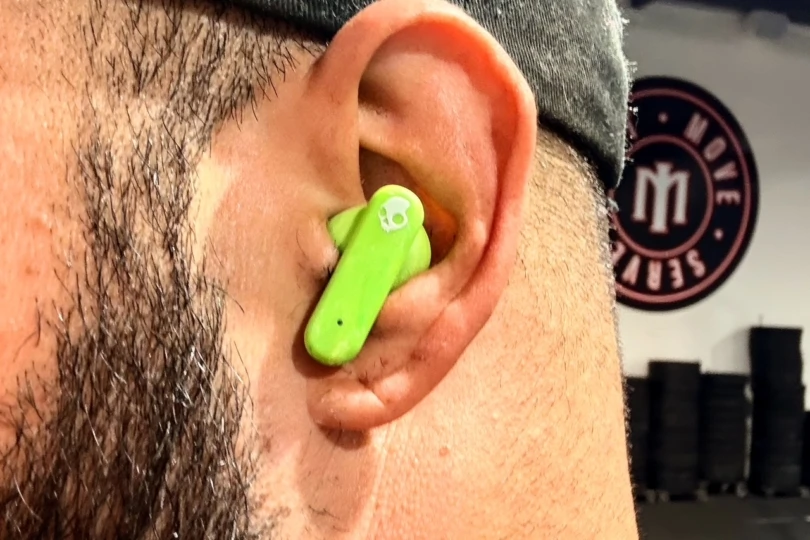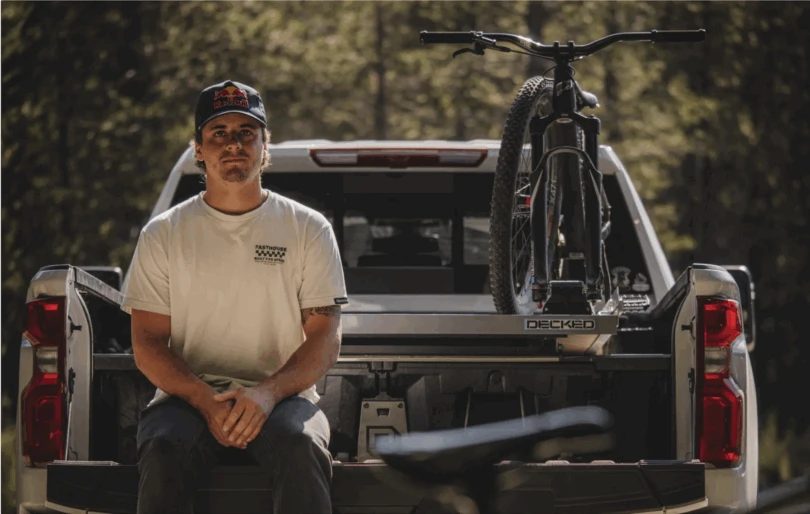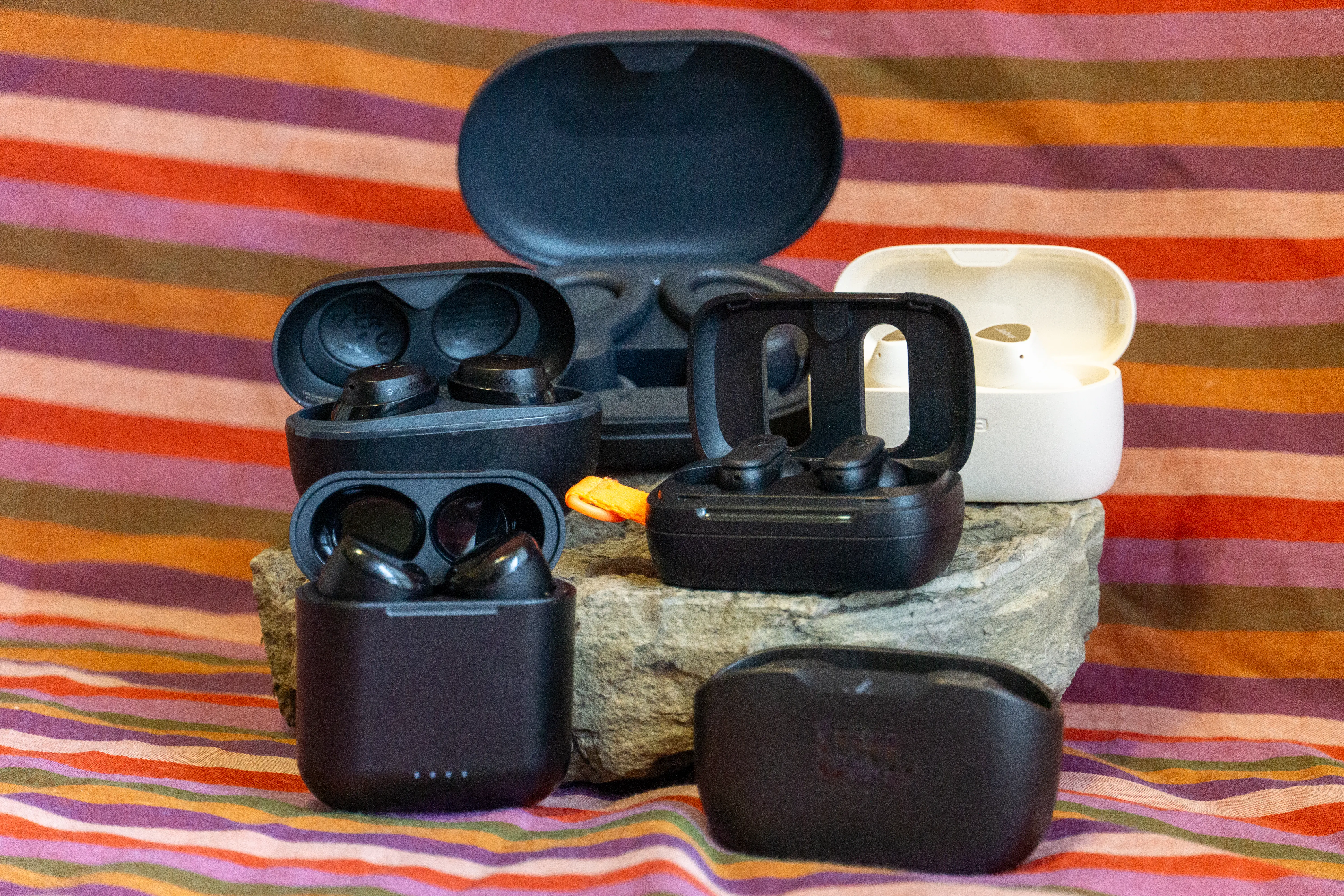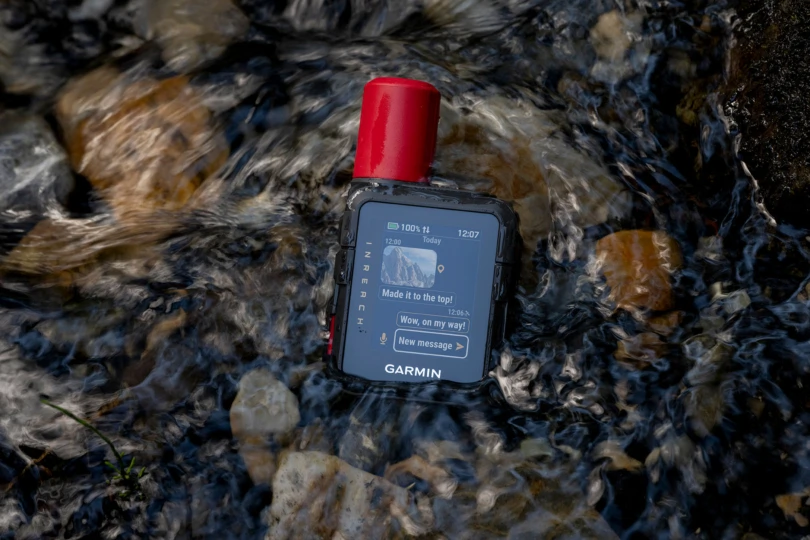Binoculars allow you to immerse yourself deeply in nature. They’re an expansive tool for any outdoor enthusiast, whether you’re a hiker, birder, stargazer, or hunter. The best binoculars will provide you with an up-close view and levels of detail you can’t experience with the naked eye.
Now is a better time than ever to purchase a set of binoculars, thanks to numerous technological advancements. There are image-stabilized binoculars that provide rock-solid images at high magnification, as well as binoculars that utilize unique materials to create a lighter, more compact model with large objective lenses. No matter what you’re looking for, there’s a perfect pair of binoculars for you.
The expert team of testers at GearJunkie has been using binoculars for decades. We’ve taken all of the binoculars on this list to the field, including new releases for 2025. Our testers relied on them for hunting, birding, stargazing, and general wildlife viewing. We paid close attention to optical clarity, weight, and low-light performance, and assessed overall value based on our field experiences.
With that experience, we compiled an extensive list of the best, ensuring you can find the right fit for your needs and budget. And if this is your first time purchasing binoculars, be sure to check out the included buyer’s guide section, which should clear up any confusion on a somewhat technical subject.
For dedicated hunters, check out our Best Hunting Binoculars Buyer’s Guide.
Editor’s Note: On November 14, 2025, GearJunkie updated this guide with new awards, and the inclusion of the Maven M.2 10X50 Monocular, and the SIG Zulu6 HDX 20X42. An extended rating system was also added to the guide.
The Best Binoculars of 2025
ZEISS SFL 10X50
-
Value
8.9
-
Size
9.5
-
Optical Clarity
9.4
-
Low-light Performance
9.8
- Weight: 1 lb., 15 oz.
- Close focus range: 5.9'
- Eye relief: 18 mm
- Magnification: 10x
- Objective lens: 50 mm
- Field of view: 366'
- Prism: Schmidt-Pechan (roof)
Pros
- Size and weight (fits in standard bino harnesses)
- Low light performance
- Excellent clarity
- Sensitive focus wheel
- Eyecups highly adjustable
- Price to quality
Cons
- Provided case
- Lens covers
- Price
- Weight when compared to all binoculars. But, light for a 10X50.
Nocs Provisions Pro Issue 8×42
-
Value
9.0
-
Size
8.0
-
Clarity
7.0
-
Low-light performance
6.8
- Weight: 1 lb., 8 oz.
- Close focus range: 6’
- Eye relief: 17 mm
- Magnification: 8x
- Objective lens: 42 mm
- Field of view: 429’
- Prism: Phase-coated BaK4 roof
Pros
- Lightweight
- Durable and easy to hold on to in all conditions
- 6’ close focus range
- Better clarity than many budget binoculars
Cons
- Not as optically clear as other options
- Low light performance suffers
Celestron Outland X 10×42
-
Value
8.0
-
SIze
7.5
-
Clarity
6.8
-
Low-light performance
6.5
- Weight: 2 lbs.
- Close focus range: 14.8’
- Eye relief: 18.2 mm
- Magnification: 10x
- Objective Lens: 42 mm
- Field of View: 289’
- Prism: Bak4 Roof
Pros
- Most affordable adult binoculars on the list
- Durable design
- Compact size
- Solid clarity
- Easy to use
- Ideal size
Cons
- Sensitive adjustment knob
- Edges of field of view are blurry
- Neck strap is very long/leads to slack
- Narrow field of view
Nikon Monarch M5 8×42
-
Value
8.1
-
Size
9.0
-
Clarity
8.0
-
Low-light performance
7.7
- Weight: 1 lb., 6 oz.
- Close focus range: 8.2'
- Eye relief: 19.5 mm
- Magnification: 8x
- Objective lens: 42 mm
- Field of view: 335'
- Prism: Roof
Pros
- Lightweight
- Crisp, clear imagery in all lighting conditions
- Durability
Cons
- Average close range of focus
Maven M.2 12X50 Monocular
-
Value
7.9
-
Portability
9.0
-
Clarity
8.5
-
Low Light Performance
8.0
- Weight: 1 lb., 4 oz.
- Close focus range: 7.5'
- Eye relief: 17.5mm
- Magnification: 12X
- Objective lens: 50mm
- Field of view: 289'
- Prism: Wide-angle Schmidt-Pechan
Pros
- Very high-quality glass, but cheaper due to it being a monocular
- Very compact — fits in a pocket, glove box, etc.
- Excellent clarity
- Great for low light
- 12X zoom is excellent for far distances, or gauging antler size
- Surprisingly steady despite high zoom
Cons
- Not tripod-adaptable
- Heavy
- Limited field of view
- Expensive for monocular
Maven C.3 10×50
-
Value
9.8
-
Size
8.1
-
Clarity
8.2
-
Low-light performance
8.2
- Weight: 1 lb., 12 oz.
- Close focus range: 8.2’
- Eye relief: 15 mm
- Magnification: 10x
- Objective Lens: 50 mm
- Field of View: 250’
- Prism: Roof
Pros
- Great depth of imagery
- Easy to adjust
- Durable design
Cons
- Narrow field of view
SIG ZULU6 HDX 20×42
-
Value
6.9
-
Size
6.8
-
Clarity
9.5
-
Low-light performance
7.4
- Magnification: 20x
- Objective: 42mm
- Eye Relief: 15mm
- Linear FOV: Unspecified
- FOV: 3.3 degrees
- Weight: 1 lb., 5.9 oz.
- Prism Style: Roof
Pros
- Image stabilizing
- Lightweight
- Serious magnification
- Extreme clarity
Cons
- Loss of performance in low light conditions
NOCS Provisions Standard Issue 8×25
-
Value
8.7
-
Size
9.0
-
Clarity
6.9
-
Low-light performance
5.0
- Weight: 11.85 oz.
- Close focus range: 13’
- Eye relief: 10 mm
- Magnification: 8x
- Objective Lens: 25 mm
- Field of View: 357’
- Prism: BaK4 Roof
Pros
- Size and weight is perfect for kids
- Durable
- Waterproof
Cons
- No matter what, kids will smudge the lens
- Poor low-light performance
Other Binos We Recommend
-
Value
8.9
-
Size
8.0
-
Clarity
7.7
-
Low-light performance
7.0
- Weight: 1 lb., 5.2 oz.
- Close focus range: 5'
- Eye relief: 17 mm
- Magnification: 8x
- Objective lens: 42 mm
- Field of view: 393'
- Prisms: Roof
Pros
- Incredible value for the quality of optics
- Great viewing
- Excels in low light
- Excellent warranty and customer service
Cons
- Focus wheel and right eye diopter are a bit clunky
- Included harness is not the easiest to use
- Phenomenal warranty
- Weight: 8.9 oz.
- Close focus range: 7.4’
- Eye relief: 15 mm
- Magnification: 8x
- Objective Lens: 32 mm
- Field of View: 405’
- Prism: BaK4 Roof
Pros
- Compact and lightweight
- Durable and submersible
- Tripod compatible
Cons
- More susceptible to shaky hands
- Weight: 1 lb., 10.7 oz.
- Close focus range: 4.9’
- Eye relief: 18.1 mm
- Magnification: 8x
- Objective Lens: 42 mm
- Field of View: 420’
- Prism: Wide Angle Roof
Pros
- Best visual experience
- Affordable compared to premium competitors
- Durable
Cons
- Expensive for the casual user
- Weight: 1 lb., 8.6 oz.
- Close focus range: 5’
- Eye relief: 17 mm
- Magnification: 10x
- Objective lens: 42 mm
- Field of view: 341'
- Prism: Roof
Pros
- Close focus for birding, optical technology
- Simple and elegant design
- Industry-best warranty
Cons
- Wear down with heavy use
- Expensive
- Weight: 1 lbs., 12 oz.
- Close focus range: 13.5'
- Eye relief: 15 mm
- Magnification: 10x
- Objective lens: 42 mm
- Field of view: 342'
- Prisms: Abbe-Koenig
Pros
- Tough magnesium body
- Field-replaceable eyecups
- Built-in tripod adapter port for easy glassing
Cons
- Eyecups don't hold position the best
- Included binocular harness isn't the most comfortable
- Weight: 3 lbs., 3 oz.
- Close focus range: 49.2'
- Eye relief: 17 mm
- Magnification: 15x
- Objective lens: 70 mm
- Field of view: 231'
- Prisms: BaK-4 Porro
Pros
- Large objective lenses gather light from night sky
- Tripod and red dot finder mounts
- Fully coated optics with BaK-4 prisms
Cons
- Difficult to keep still while handheld
- Weight: 9.9 oz.
- Close focus range: 8.2'
- Eye relief: 10 mm
- Magnification: 8x
- Objective lens: 25 mm
- Field of view: 429'
- Prisms: Roof
Pros
- Compact
- Budget-friendly
- Lightweight
Cons
- Not the best in low light
- Narrower-feeling field of view
Leupold BX-5 Santiam HD 10×42
- Weight: 1 lb., 8.3 oz.
- Close focus range: 5'
- Eye relief: 16.6 mm
- Magnification: 10x
- Objective lens: 42 mm
- Field of view: 341'
- Prisms: Multi-coated roof
Pros
- Tack-sharp optical quality
- DiamondCoat 2 lens treatment bumps up light transmission and abrasion-resistance
- Guard-Ion hydrophobic treatment on lenses is excellent
- Oversized eyepieces
Cons
- Lens covers aren't the highest-quality
Binoculars Comparison Chart
| Binoculars | Price | Weight | Field of View | Eye Relief | Magnification |
|---|---|---|---|---|---|
| ZEISS SLF 10X50 | $1,799 | 1 lb., 15 oz. | 366′ | 18 mm | 10x |
| NOCS Provisions Pro Issue 8×42 | $329 | 1 lb., 8 oz. | 429’ | 17 mm | 8x |
| Swarovski NL Pure 10X42 | $3,199 | 1 lb., 13.6 oz. | 399′ | 18 mm | 10x |
| Celestron Outland X 10×42 | $120 | 2 lbs. | 289′ | 18.2 mm | 10x |
| Nikon Monarch M5 8×42 Binoculars | $339 | 1 lb., 6 oz. | 335′ | 19.5 mm | 8x |
| Maven M.2 12X50 Monocular | $500 | 1 lb., 4 oz. | 289′ | 17.5 mm | 12x |
| Maven C.3 | $550 | 1 lb., 12 oz. | 251-262′ | 15 mm | 10x, 12x |
| SIG ZULU6 HDX 20X42 | $1,199 | 1 lb., 5.9 oz. | Not specified | 15 mm | 20x |
| NOCS Provisions Standard Issue 8×25 | $100 | 11.85 oz | 357’ | 10 mm | 8x |
| Vortex Diamondback HD 8×42 | $240 | 1 lb., 5.2 oz. | 393′ | 17 mm | 8x |
| NOCS Provisions Field Tube 8×32 | $130 | 8.9 oz. | 405’ | 15 mm | 8x |
| Maven B1.2 | $1,150 | 1 lb., 10.7 oz. | 347-420′ | 8.1 mm | 8x |
| Vortex Viper HD 10×42 | $650 | 1 lb., 8.6 oz. | 341′ | 17 mm | 10x |
| Leupold BX-2 Alpine HD 10×42 | $250 | 1 lbs., 12 oz. | 342′ | 15 mm | 10x |
| Celestron Skymaster Pro 15×70 | $280 | 3 lbs., 3 oz. | 231′ | 17 mm | 15x |
| Nikon Trailblazer 8×25 | $120 | 9.9 oz. | 429′ | 10 mm | 8x |
| BX-5 Santiam HD 10×42 Binoculars | $1000 | 1lb., 8.3 oz. | 341′ | 16.6mm | 10x |
How We Scored and Assessed Binoculars
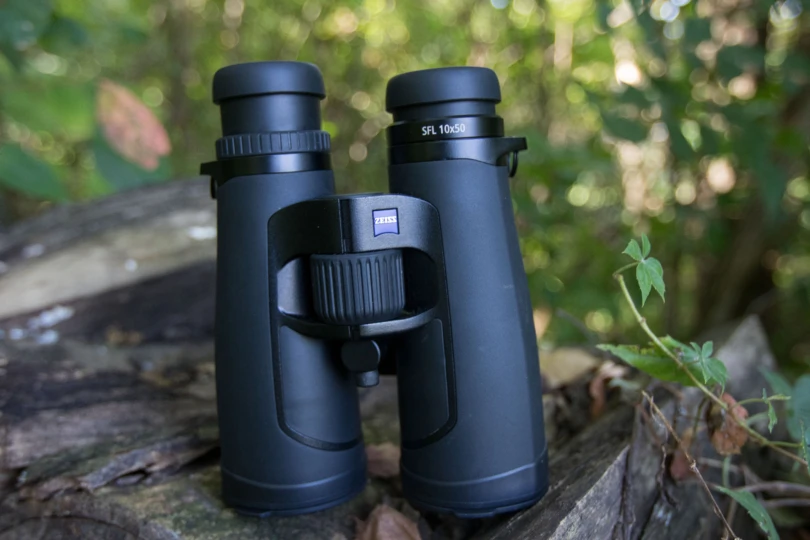
When looking at binoculars, we assessed what we believe to be the four most critical factors for a wide range of users: value, size, clarity, and low-light performance.
Value: How far is your dollar going? Some budget binoculars really outshine others in their price range, and some high-end binoculars demand really high prices, with only marginal improvements in performance.
Size: Size gets a little complicated. For the most part, it comes down to how compact a binocular is overall compared to the other options on the list. However, there are some standouts, like the ZEISS SFL, that are overall heavy and large, but score well because they’re very compact for a 10X50 binocular.
Clarity: This will give you a general idea of how clear an image is. The top-scoring options (nine and above) have no fringing on the edges, no chromatic aberration, and no glare, even in bright light situations.
Low-light performance: Some binoculars, especially 10X50s, gather more light, allowing you to discern objects more clearly as light fades. Others lose less light in the process of transmitting the reflected image to your eye. Those that performed best at dawn and dusk got high marks.
Overall Score: The overall score isn’t an average of the above scores. Because well, it doesn’t have to be. By not making this an average, we were able to capture the “it” factor that some binos have, and provide a better overall picture of the binocular. For example, the Swarovski NL Pure suffered in Value and Size scores, but on performance alone, it’s one of the best. So we broke the rules and scored it accordingly.
How We Tested the Best Binoculars
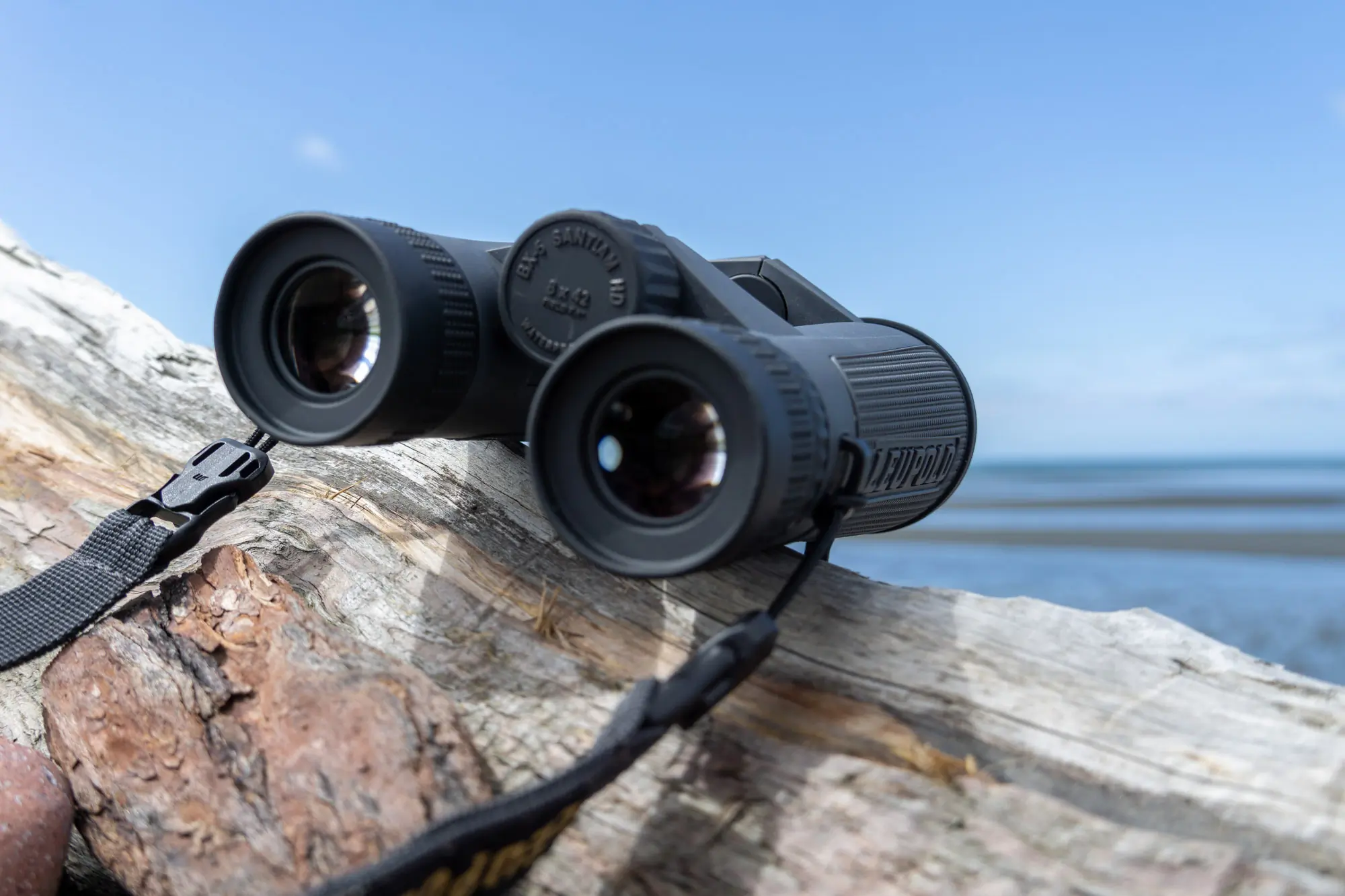



The Testing Process
At GearJunkie, we understand the importance of binoculars delivering crisp, reliable vision. They also need to be durable and easy to use. Whether you’re chasing down hummingbirds in your backyard, scouting for a bull elk, or glassing the night sky, you need to be able to do it efficiently and effectively.
Our team tested over a dozen binoculars (and a couple of monoculars) to determine how they performed for various uses, budgets, and hand sizes. We focused on differences at sunrise and sunset to analyze low-light performance. Many hours were spent going back and forth between sets, paying close attention to image clarity, checking for chromatic aberration, and glare in bright light situations.
Finally, we took them out for actual field use. Whether we were hiking, birding, or on a hunting trip, we packed binos along, and at times, tested durability beyond what most people would be comfortable with. We combined our diverse experiences with a deep background in optics to determine value and provide our recommendations.
Our Expert Testers
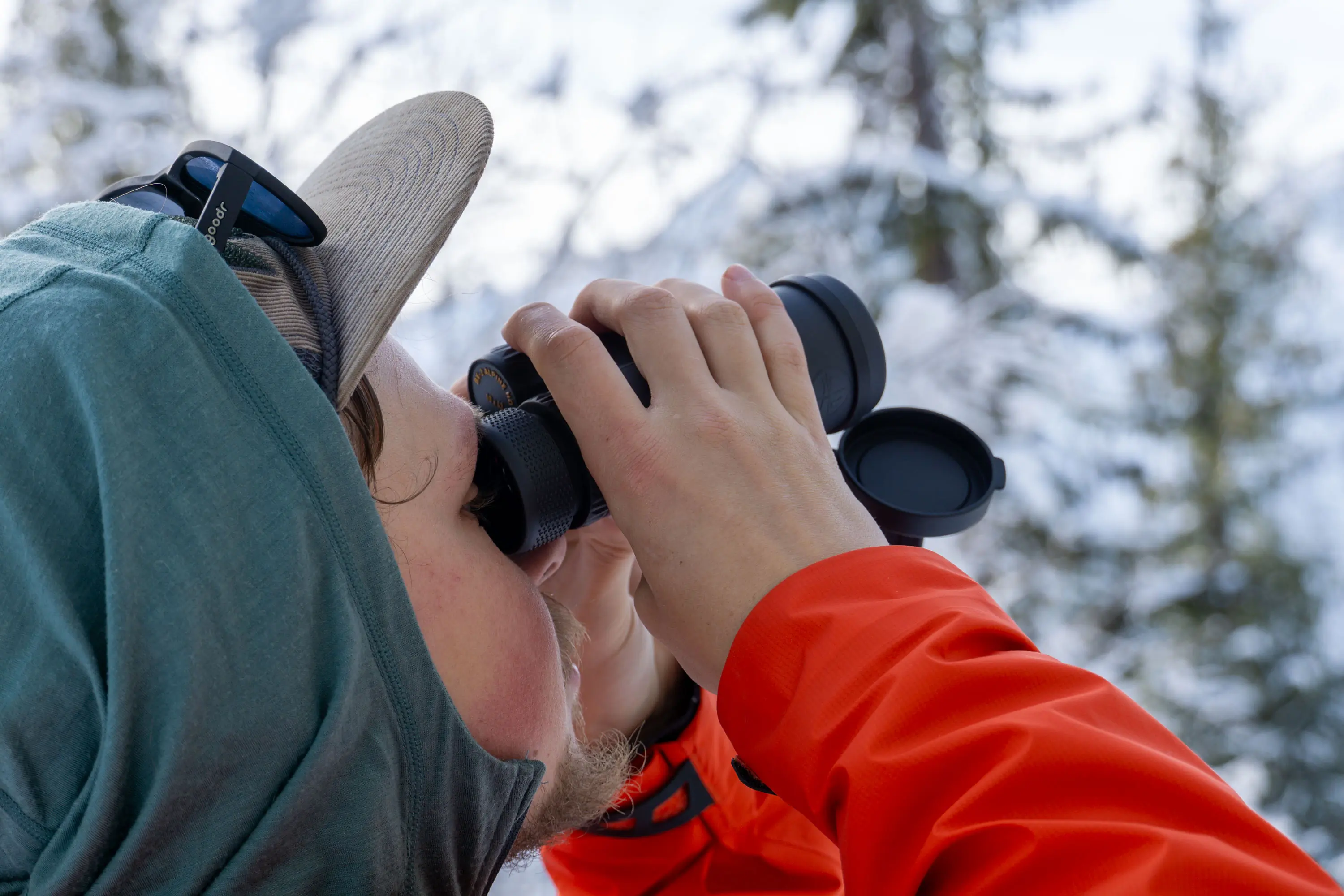



Reviewer Nick LeFort leads the charge on this guide. An avid outdoors enthusiast, he’s no stranger to the need for a good pair of binoculars. He also knows how to use them. He spent the year testing out all of the binoculars on this list in a variety of environments and conditions. The whole time, the weather was hot and humid, which would have made any undeserving optics fog up and fail.
To make his final decisions, he focused on clarity, size and weight, field of view, and durability. He also enlisted the help of his daughters to ensure that the binos we picked for kids were certified by actual kids, not a long-haired kid at heart in his forties.
Kylie Mohr brings an additional perspective and knows the value of top-of-the-line binoculars firsthand. As an environmental journalist, she has accompanied snowy owl researchers out into the field in search of the beloved bird. Mohr spent long hours staring into binoculars, looking for a flash of white on the brown and green tundra. Cold hands and biting wind made easy-to-adjust models extra important, and high-powered magnification was essential to find nest sites.
GearJunkie writer Morgan Nowels is a passionate hunter. Binoculars go with him on every hunt, whether it’s in search of backcountry elk, whitetail deer, or chasing small game like ducks and squirrels. Having hunted seven different states in the last five years, he knows what works and what doesn’t. He’s used binos in every condition imaginable, and also contributes to our Best Hunting Binoculars guide.
Buyer’s Guide: How to Choose the Best Binoculars




All binoculars are unique. Even within a brand, there can be a variety of aspects that make them completely different from one another. There are many different features and measurements to consider when trying to find the best binoculars for you. By working through our list and prioritizing your needs, finding the best binoculars for your needs should be simple.
How Do Binoculars Work?
Put simply, a binocular magnifies an image by utilizing three separate optical components: the ocular lens, the objective lens, and the prisms. These three pieces of glass work in concert to take in light, flip it, and project it for your viewing pleasure.
Those new to buying binoculars will notice a few significant numbers while shopping through different options. The magnification power, followed by the objective lens diameter, is the number you see presented as “8×40” or “10×42,” and it communicates very important bits of information.
Magnification
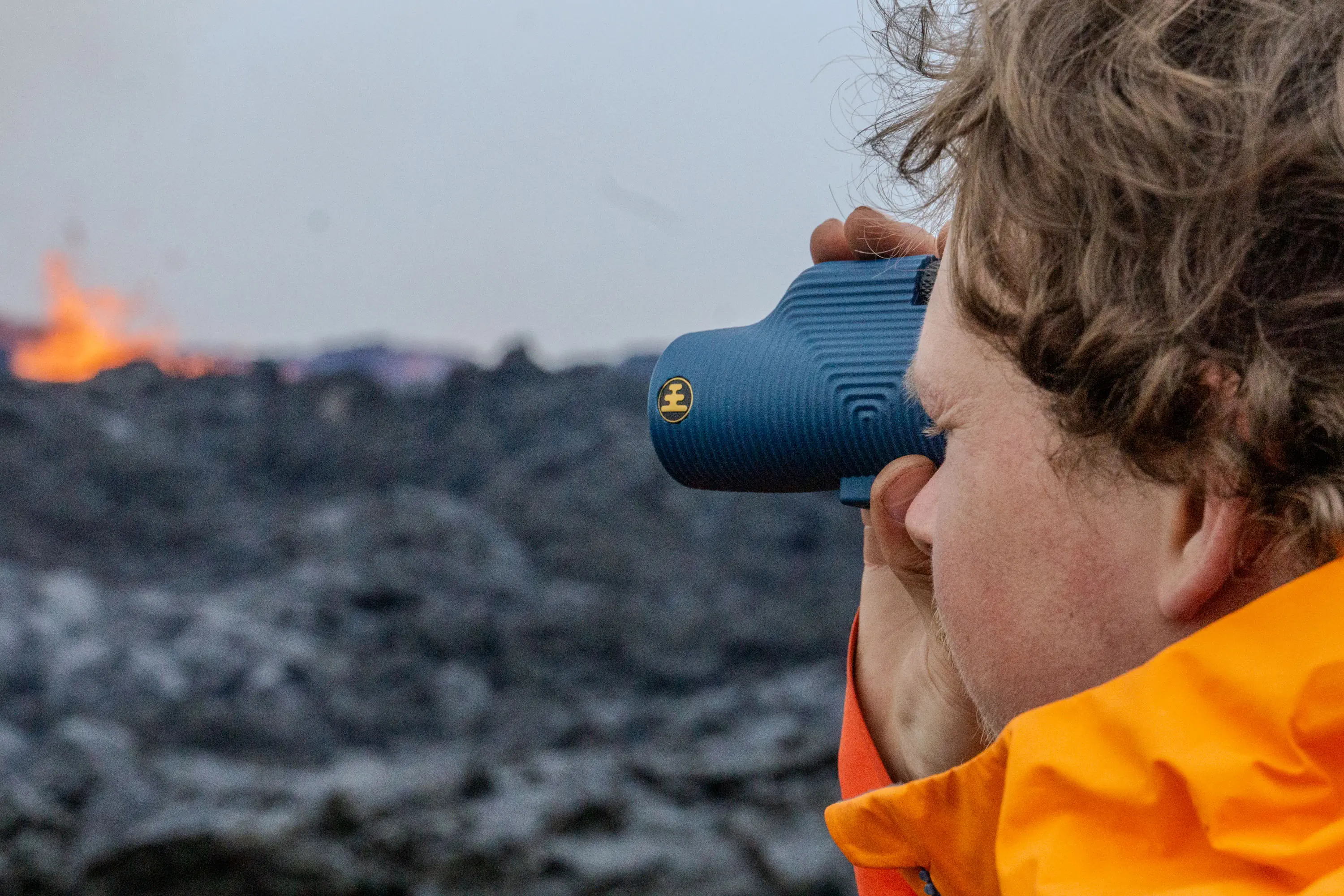



The first number is magnification, and is relatively easy to understand. This number indicates how many times closer what you’re viewing will appear to you. A set of binoculars with 8x magnification makes objects appear 8x closer. A set of binoculars with 10x magnification makes objects appear 10x closer.
This magnification is thanks to the ocular lens, a concave lens that blows up the image coming into the binoculars from the outer objective lens.
While you may think that a higher magnification is best, there are some downsides. First and foremost, binoculars with a higher magnification are more difficult to hold steady. There’s a reason most of our recommendations are eight and 10-powered: going higher than that will result in a shaky image while free-handing binoculars. Higher-powered binoculars work best in conjunction with a tripod for steady viewing.
Oftentimes, a higher magnification results in a smaller field of view (more on that later). This means users will spend more time “searching” for the object they’re trying to view.
Objective Lens Size
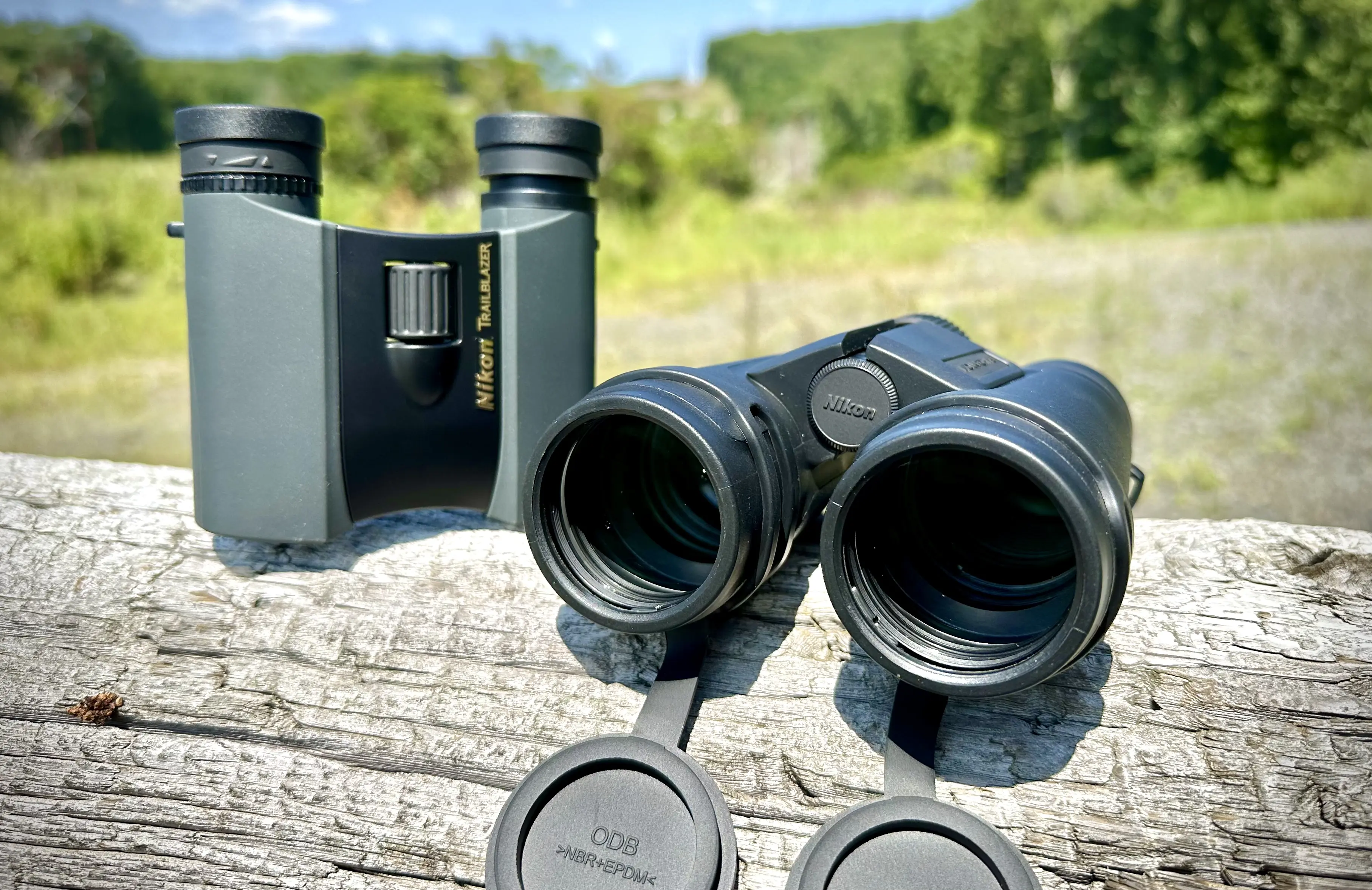



The second number, the objective lens size, is a bit more complicated. At a basic level, measuring objective lenses gives you an idea of how bulky the binoculars are to handle. Larger objective lenses will almost always result in a heavier and significantly larger body, with the ZEISS SFL 10X50 being the rare exception.
Perhaps more importantly, this number indicates the length in millimeters across the lens and, in turn, how much light your binoculars let in when viewing. Higher numbers mean larger lenses and more light, resulting in brighter images. Binoculars with smaller objective lenses are smaller and more portable.
Binoculars like the Celestron Skymaster Pro 15X70 have a large objective lens, allowing them to gather as much light as possible, making them an excellent choice for viewing stars at night. Compact binoculars such as the Nikon Trailblazer 8X25 ATB are packable but will struggle to provide a good image in low-light conditions.
In most lighting conditions, the differences are minimal. But, when the light starts to get really low, such as the hour and a half after official sunset, the difference in binoculars with a large objective lens becomes exponentially more apparent. If you plan on using binoculars in those situations, the value of a larger objective lens can’t be overstated.
Prisms, Optical Coatings, and Glass Type


Prisms are the final component of the binocular puzzle. When light refracts through a concave surface, like the objective lenses, the prism turns the image upside-down. Prisms right the image for final viewing.
We can divide prism design into two subcategories: Porro prisms and roof prisms. Without delving too deeply into each technology, Porro prism binoculars typically have a wider field of view, better depth perception, and more contrast.
Binoculars that use a Porro prism have offset eyepieces and objective lenses. The Celestron Outland 10×42 (as well as a few others on this list) share the same type of Porro prism and provide an incredible viewing experience.
Roof prism binoculars are a more comfortable shape to handle, with lenses and prisms aligned inside the binoculars themselves. This allows the binoculars they reside in to be more compact and durable, as the design is more stable. These designs are more expensive because special reflective coatings must be used to minimize the inherent loss of light caused by the design.
Optical Coatings
Lenses without optical coatings can bounce errant light around, creating a blurry and glare-prone pair of optics. These coatings are applied to both sides of the lens, tamping down some wavelengths of light and allowing for a clear beam of light to pass through them.
Optical coatings are applied in either single or multiple layers, with a multi-coat lens being superior optically. Prisms are also coated with optical coatings, with roof prisms receiving both a reflective coating and a phase-correction coating that ensures high-contrast images.
Lens Type
The types of glass used in both the lenses and prisms can also have a large effect on the overall clarity of your binoculars, and aiming for high quality here is also the best bet. Common formulations are BaK-4, also known as barium crown glass, or BK-7, a cheaper alternative. If a perfect view is what you’re after, aim for BaK-4.
Extra-low Dispersion Glass, or ED glass, helps to limit color defects that can occur when light splits up slightly after passing through the lens system. This is a more expensive glass often found in higher-end binoculars.
Field of View


The field of view is a critical piece to consider when buying binoculars. The field-of-view measurement denotes the width you’ll be viewing through your lenses. Our favorite binos for birdwatching, the Nikon Monarch M5 8×42, and our favorite premium pair, the Swarovski NL Pure 10X42s, were especially notable for their crisp and clear field of view.
A wide field of view allows users to see more of an area, whereas a smaller field of view zooms into a smaller geographical space. The relationship between objective lenses, magnification, and binocular design, in general, plays into the field of view measurement.
The field of view is presented in either feet or degrees. Most high-quality binoculars have a field of view between 6 and 8 degrees, or 300-400 feet when viewing a spot 1,000 yards away.
If you wear glasses, it should be noted that binoculars with a wide field of view often have shorter relief and may not be the best choice.
Optical Adjustments
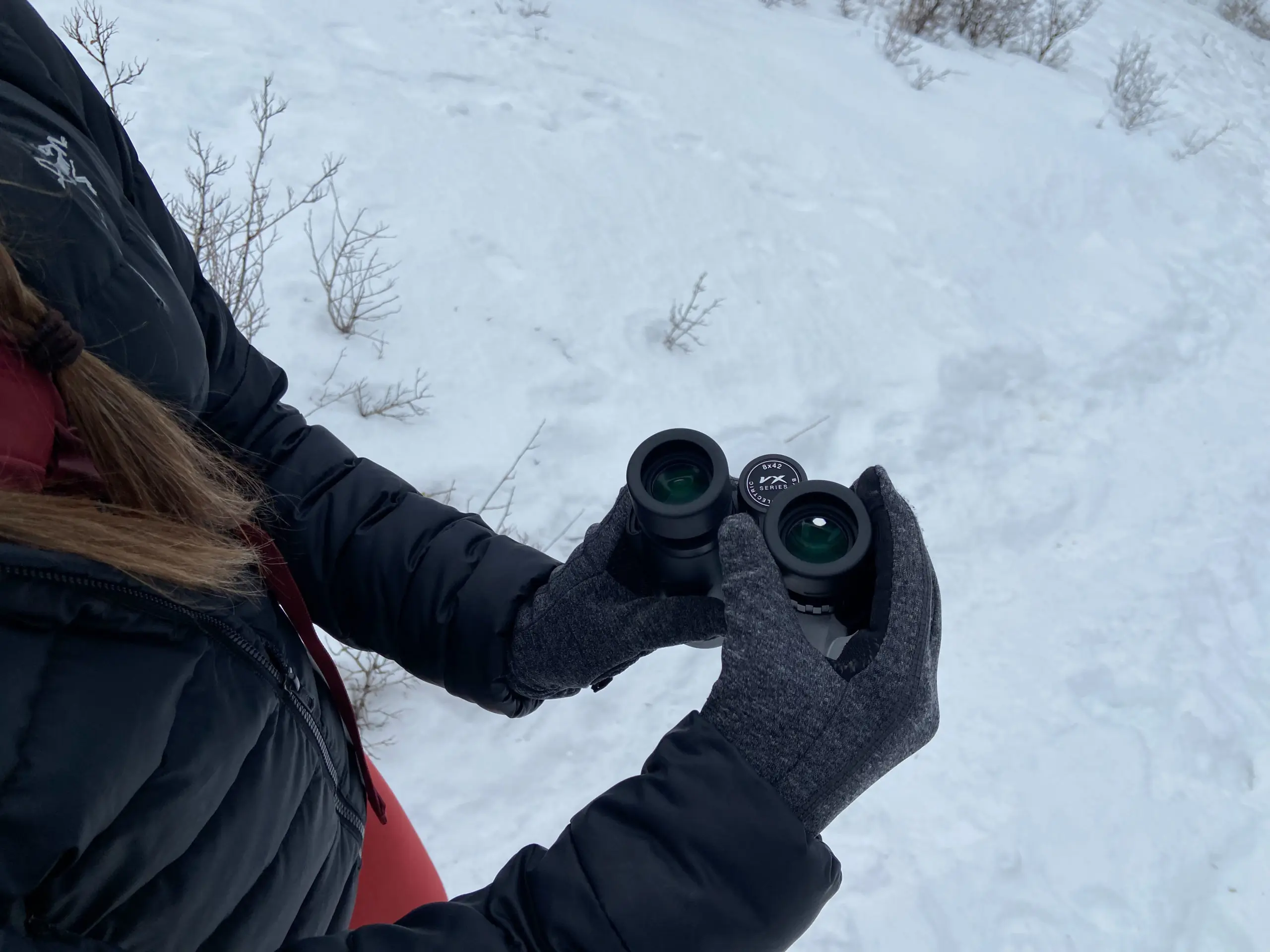



Eye Relief
Eye relief is most significant for those who wear eyeglasses, but it applies to all binocular users who might not immediately understand that a small gap between their eyes and the eyepieces is necessary to see the entire field of view.
The distance your eye should be away from the eyepiece typically measures between 5 and 20 mm. Eyeglass-wearers should seek out binoculars with an eye relief measurement long enough to accommodate their glasses, which is typically at least 10 mm. At 19.5 mm, the Nikon Monarch M5 has the most eye relief of all our favorite binos.
If you don’t wear glasses but have found the perfect pair of binoculars that happen to have long eye relief, don’t fret! Most binoculars have extendable rubber-coated eyecups. This serves as a correction and makes binoculars usable for both those with and without glasses.
Interpupillary Distance
Everyone’s face is different, and because of that, you’ll need to set the distance between your eyes (or, the interpupillary distance) to ensure that the image you see is combined between the barrels.
To do this, simply compress or expand the barrels of the binoculars together or apart until your eyes can comfortably see through both eyepieces. This will marry the two images together into one cohesive view.
Diopter Focus Adjustment
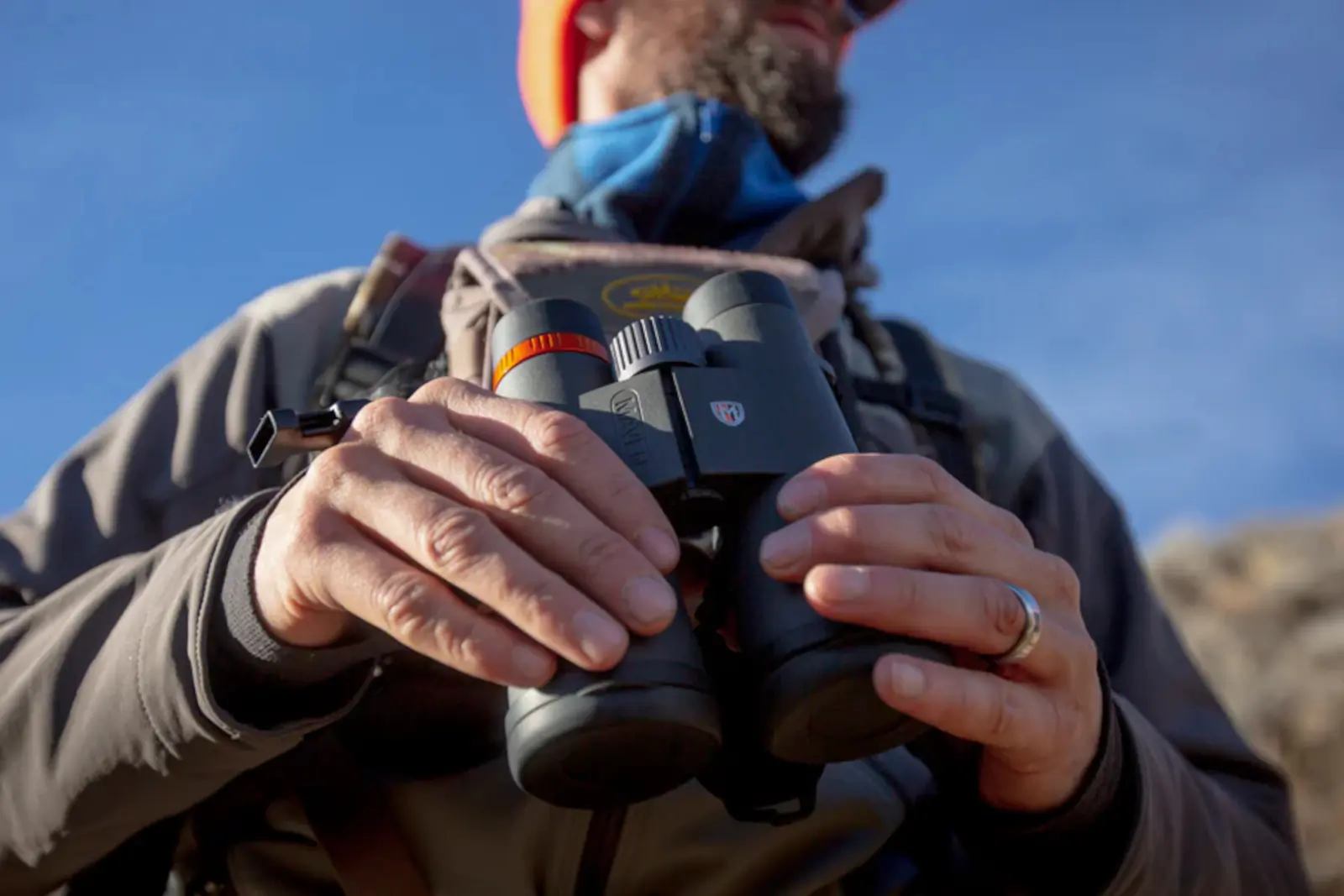



In the same way that pupil distance can vary, so can the actual focus between each eye. Because of this, dialing in the focus between the barrels of your binoculars is a surefire way to ensure you don’t get double vision during long viewing sessions.
Most binoculars worth their salt will incorporate a diopter adjustment ring into the eyepiece of one barrel of the binos to accommodate for the variations in focus. To set it, first set the diopter ring (commonly on the right eyepiece) to zero. Then, view through the binoculars with only the barrel that does not have the diopter ring, either by closing your other eye or blocking it with your hand. Using the focus wheel, bring the image into sharp focus.
Once your focus is set in your non-adjustable barrel, then uncover the diopter barrel and use the ring to dial in the focus until it is sharp in that eye as well, while covering the barrel you’ve already adjusted. Once you’ve completed this, both eyes should be adjusted for a crisp, clear image from both barrels.
Collimation
Binoculars are tools, and since a good tool is meant to be used, they can become knocked out of alignment from time to time. Specifically, the internal prisms can sometimes become unphased with one another, meaning that the image seen is blurred or doubled. To fix this, you’ll need to collimate your binoculars, which we assure is a much more frightening word for bringing images into alignment.
To be clear, collimation is most often best left to the professionals, and consulting your warranty is an excellent first step toward getting your binoculars collimated. Collimation can also be attempted at home, but this is outside of the scope of this review.
Close Focus Range


Virtually all makes and models of binoculars prioritize focusing on objects in the distance. However, all binoculars are also capable of focusing on items much closer.
The close focus range on a pair of binoculars is the measurement given to the closest distance that a specific pair of binoculars can focus. This distance enables users to examine intricate details of nearby objects. This distance is at least 25 feet for most binoculars.
The close focus range of higher-quality binos comes in at under 10 feet, with the Vortex Viper HD 10×42 having the closest range — 5.1 feet — on this list. Great for getting up close and personal with whatever you’re sighting!
Exit Pupil and Relative Brightness
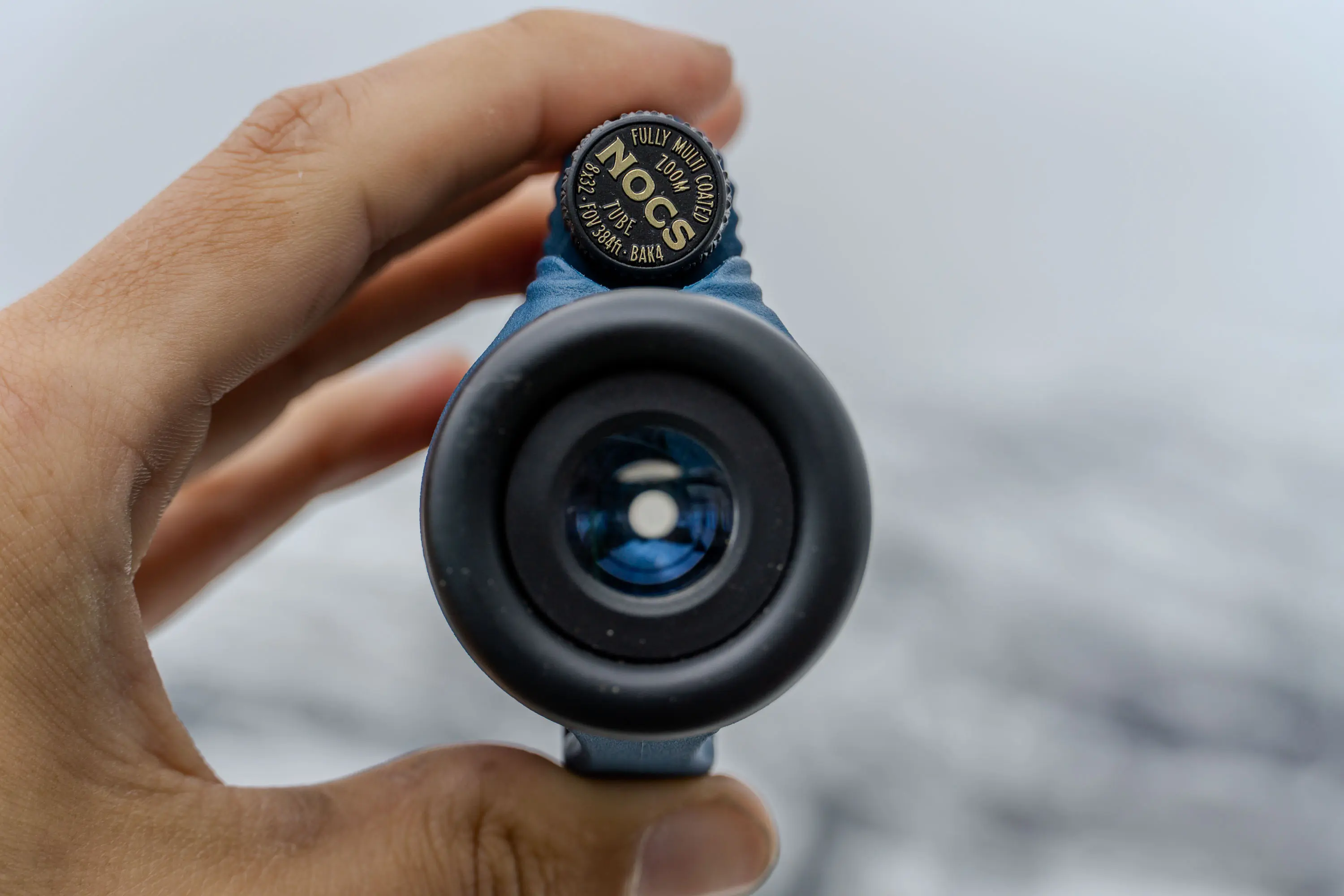



The exit pupil is the small pinpoint of light seen in the eyepieces when you hold them at a distance. The larger the diameter of this pinpoint, the more light that is allowed to pass through. This figure is easy to calculate by dividing the objective lens diameter by the magnification power.
For example, a pair of 8×42 binoculars would yield an exit pupil of 5.3 mm. This number can be used to compare binoculars and the relative brightness of the image they provide.
Packed Size & Weight
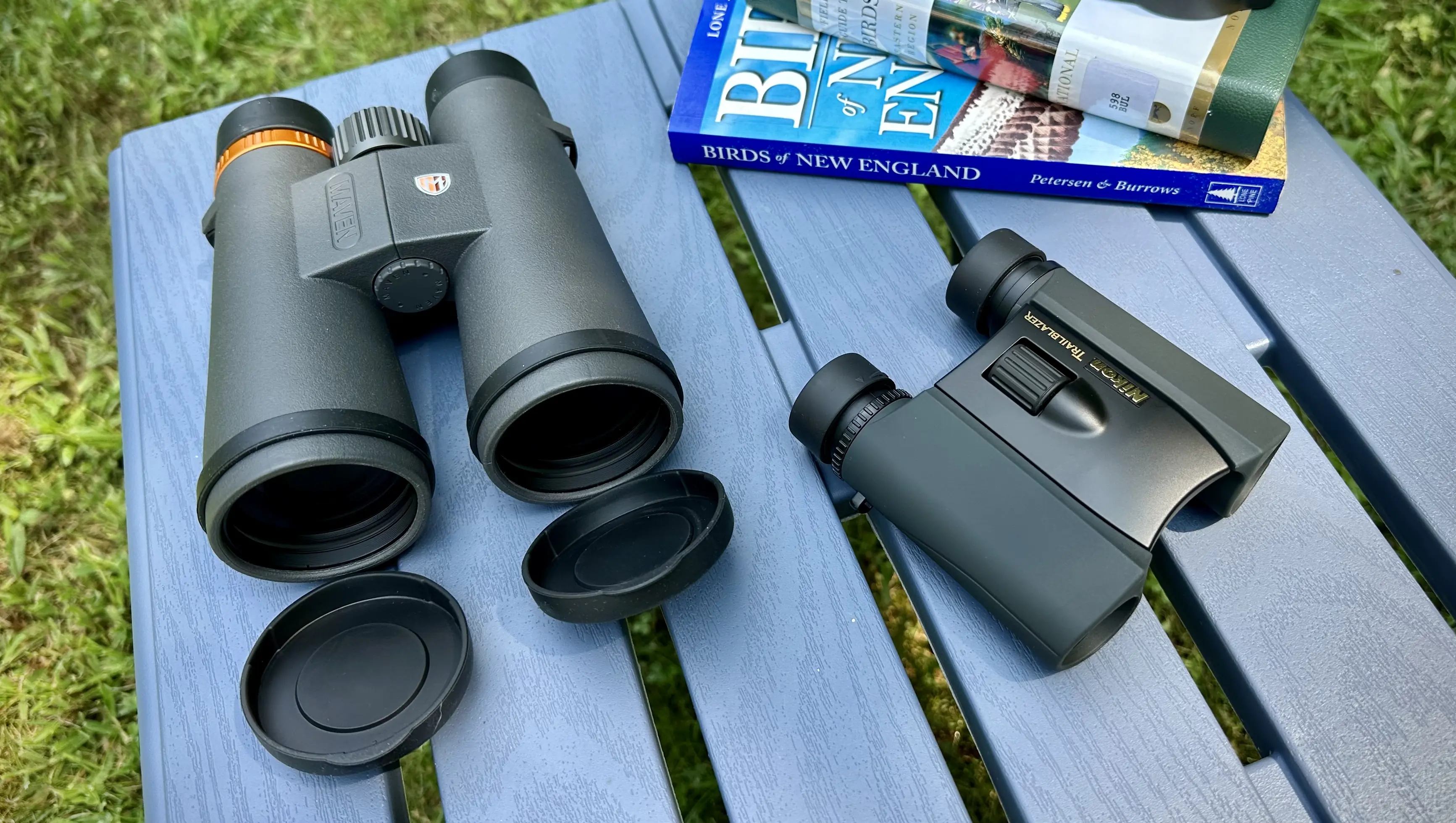



Depending on your desired use, the size and weight could be key considerations. When you’re hiking and hunting, having the lightest pair possible will make trekking that much more enjoyable. We also like having a small pair handy in the car in case a good animal peeping opportunity arises. Our favorite compact binoculars for adults are the Nikon Trailblazer 8×25 Binoculars, NOCS Provisions Standard Issue 8×25, and the much pricier Maven C.3.
Warranty
A solid warranty is often overlooked when purchasing outdoor equipment. That shouldn’t be the case in your search for binoculars. Binoculars are technical pieces of outdoor equipment that may endure some unintended abuse. If you spend big bucks on them, you need to ensure that the investment is protected.
To give a brief rundown, Vortex, Maven, and Leupold have the best warranties. These brands cover everything, including accidental breakage, for life. No receipt is needed, and no questions are asked.
Swarovski and Nikon cover defects, but not accidents. Other brands offer warranties that fall somewhere in the middle or vary depending on the specific product being purchased.
If you want an in-depth look at the warranty policy of the binoculars you’re looking at purchasing, check out Hunt/Fish Editor Rachelle Schrute’s “The Ultimate Binocular Warranty Comparison: Who’s Is Best?” article.
Price & Value


Binoculars on our list range in price from around $90 to $3,000. While the cheaper pairs that we recommend on this list are high quality relative to their price (or they’re for kids), it is important to realize that there is a reliable relationship between price and overall quality of glass. If you’re seeking high-quality binoculars able to hold up to active use and the elements, we recommend investing in the best pair you can afford.
Budget
The lower-priced options ($90-125) on our list include binoculars for children, monoculars from NOCs, and our budget pick, the Celestron Outland X 10×42 Binoculars ($105), which are a good entry pair of binoculars.
With budget binoculars, you won’t get the clearest image, and you may find they’ll fog up occasionally due to a lack of coatings. But, for a pretty low price, you can start to see things in the outdoors that you’ve been missing for years.
Mid-Tier
Spending a bit more can get you a lot more in the binocular realm, and for $250-300, there are plenty of excellent options. Typically, those that fall in this tier will have better glass and improved durability, including higher IPX ratings.
Our best overall pick, the NOCS Provisions Pro Issue ($295), is still a killer value given its extended field of view, close focus range, and overall adaptability between activities. The Nikon Monarch M5 8×42 ($270) excels in all light conditions and requires very little adjusting, making it ideal for birdwatching where you need to be fast on your feet.
The Vortex Diamondback HD binoculars ($240) have above-average optical quality, which means they compete with any other binos on the market. And, if you want a pair suited for the night sky, check out the Celestron Skymaster Pro 15×70 ($260).
You may find some binoculars in this price range lose some performance compared to their higher-end counterparts in low-light conditions.
Premium
Top-of-the-line binoculars can range from $500 to $5,000. The ones on our list top out at $3,000. At this price point, you’ll get the best glass available. The pricier the pair, the better the glass, and typically, the better they perform in low-light conditions; however, this may not mean they are better suited for how you want to use them.
Our favorite premium binoculars, the Swarovski NL Pures ($2,999) have a stellar field of view, the clearest glass and a durable build that will last. Others in this realm, the Maven C.3 10×50 ($500) and the Viper HD 10×42 binoculars by Vortex ($650), have top-of-the-line glass that allows you to see details with great clarity.
Premium binoculars will provide noticeably clearer views of distant objects. A prime example is when a member of our team was out with a wildlife photographer. They were out trying to capture images of mountain goats. While looking through the budget binoculars from the truck, our team member was trying to decipher whether what he was looking at was a mountain goat or a patch of snow. When he picked up a premium set of binos, it was instantly clear that it was just a patch of snow.
Frequently Asked Questions
Binoculars have both a magnification number (or strength), and a size (the diameter of the objective lens), which is most often expressed as a combination of two figures, such as 8×42 or 12×50.
The magnification number is the first figure given and relates how much closer images through the binoculars will appear. For example, many of the binoculars in our review provide an 8x or 10x magnification, where images appear 8 to 10 times closer than they are.
Higher magnification numbers will provide a more punched-in view, but oftentimes can be more difficult to hold steady. We’ve found that an 8x binocular is ideal for viewing landscapes, and that a 10x can aid in spying small wildlife like birds.
The lens size ultimately tells you how much light the binoculars are able to gather, and can be thought of as the aperture on a camera. The larger the lens size, the more light can be allowed in.
When choosing the magnification for your binoculars, you need to consider how you’ll primarily use them. As an outdoor site, we would recommend everyone to purchase binoculars with a minimum magnification of 7x.
Binoculars with high magnification, such as 10x or greater, are suitable for long-distance viewing. These are often the go-to choice for hunters and the most serious birders.
Binoculars with notably smaller magnifications — in the 3x-5x range — can be good compact options for ultralight backcountry use or viewing concerts, theater productions, and sporting events from the nosebleeds.
Both 10×42 and 8×42 binoculars can share a 42mm objective lens. This example, however, provides two binoculars that differ in magnification. One pair has a 10x magnification while the other has an 8x magnification.
As you likely deduced, the 10x magnification binoculars are more powerful than the 8x. This allows you to view objects a bit more clearly and also hone in on more intricate details.
While the 8x magnification lens may not be as powerful, it does offer a more stable viewing experience. This means users can more easily stay focused on their subject matter and need to worry less about maintaining a steady hand.
Both 10×42 and 8×42 binoculars serve their purpose, and one isn’t necessarily better than the other. Ultimately, it’s up to you to decide which magnification will better suit your needs.
The best binoculars are the ones you’ll actually use. And oftentimes, that means going with a more compact pair. Luckily, you can get a packable pair without sacrificing too much.
The main thing with compact binoculars is light transmission. It won’t be too much of a problem during the day, but at sunrise and sunset, you may notice the quality of the image decrease.
Bottom line — if you plan to use your binoculars often or for important tasks like hunting or birdwatching, it’s worth investing more and hauling a bigger set. If your use is casual, a compact pair will work great.
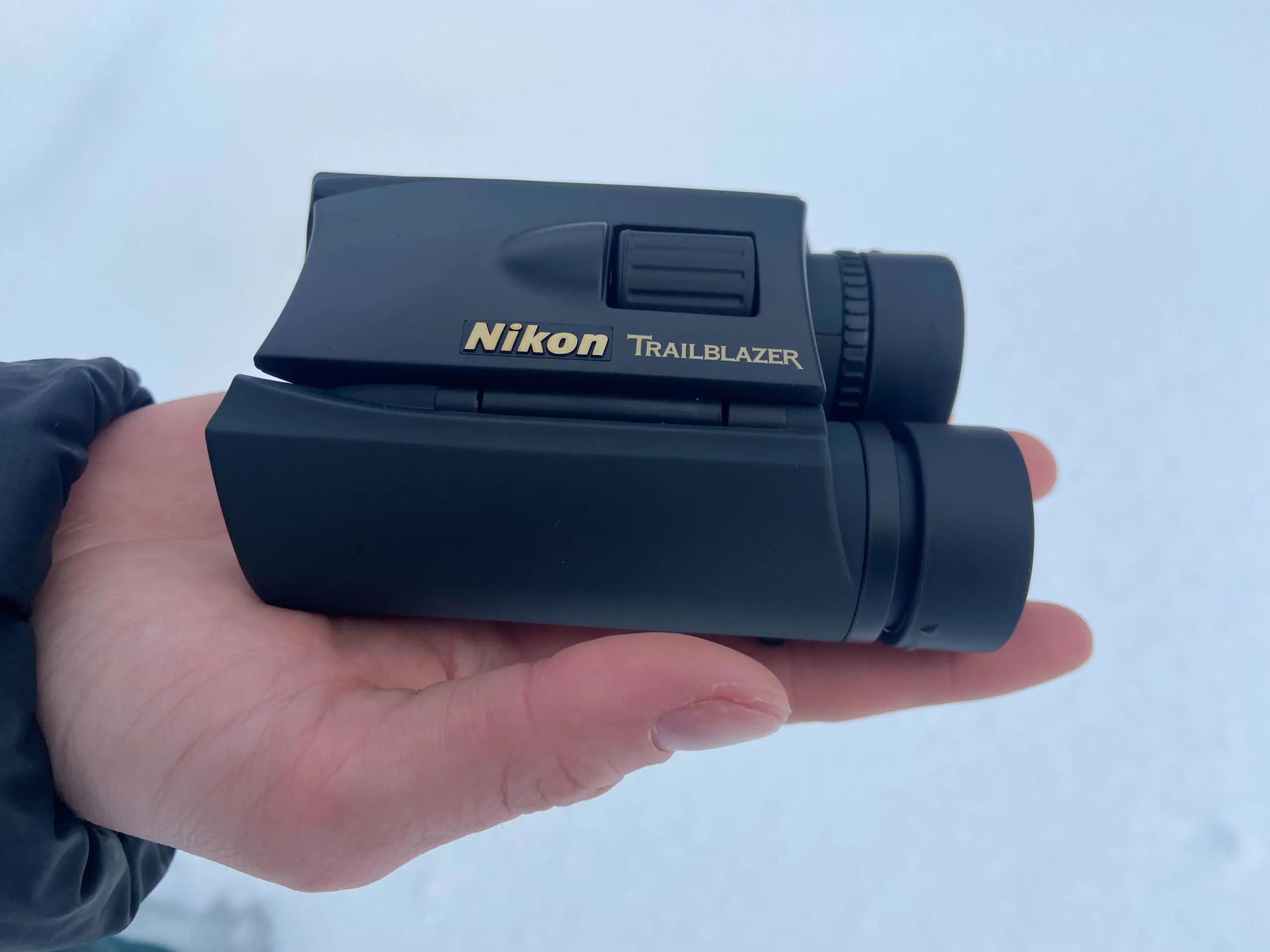



You can birdwatch with any pair of binoculars, and serious birdwatchers have multiple pairs in their arsenal. At a bare minimum, select a pair of binoculars with at least 8x magnification.
Binoculars of this caliber offer a wide enough field of view to find and follow birds without compromising the magnification needed to identify your avian subject. If you’re doing most of your bird watching from a considerable distance, try a pair of binoculars with a 10x magnification.
While slightly shakier and generally with a smaller field of view, the larger magnification allows you to focus closely on the bird at hand and observe its most intricate details. As you become more experienced, you’ll likely discover the value of having various binoculars on hand.
Is two better than one? It depends! Monoculars and binoculars both excel in different situations. Due to the singular nature of their viewing tube, monoculars can be smaller, more compact, and a good choice for users concerned about size and weight.
Monoculars can also be cheaper. But if you plan on using a device for extended periods of time (observing a bull elk or watching a hawk preen), binoculars are likely a better choice. Staring with magnification on one eye and not the other with a monocular causes eye strain if done for too long. Binoculars also have a wider field of view.
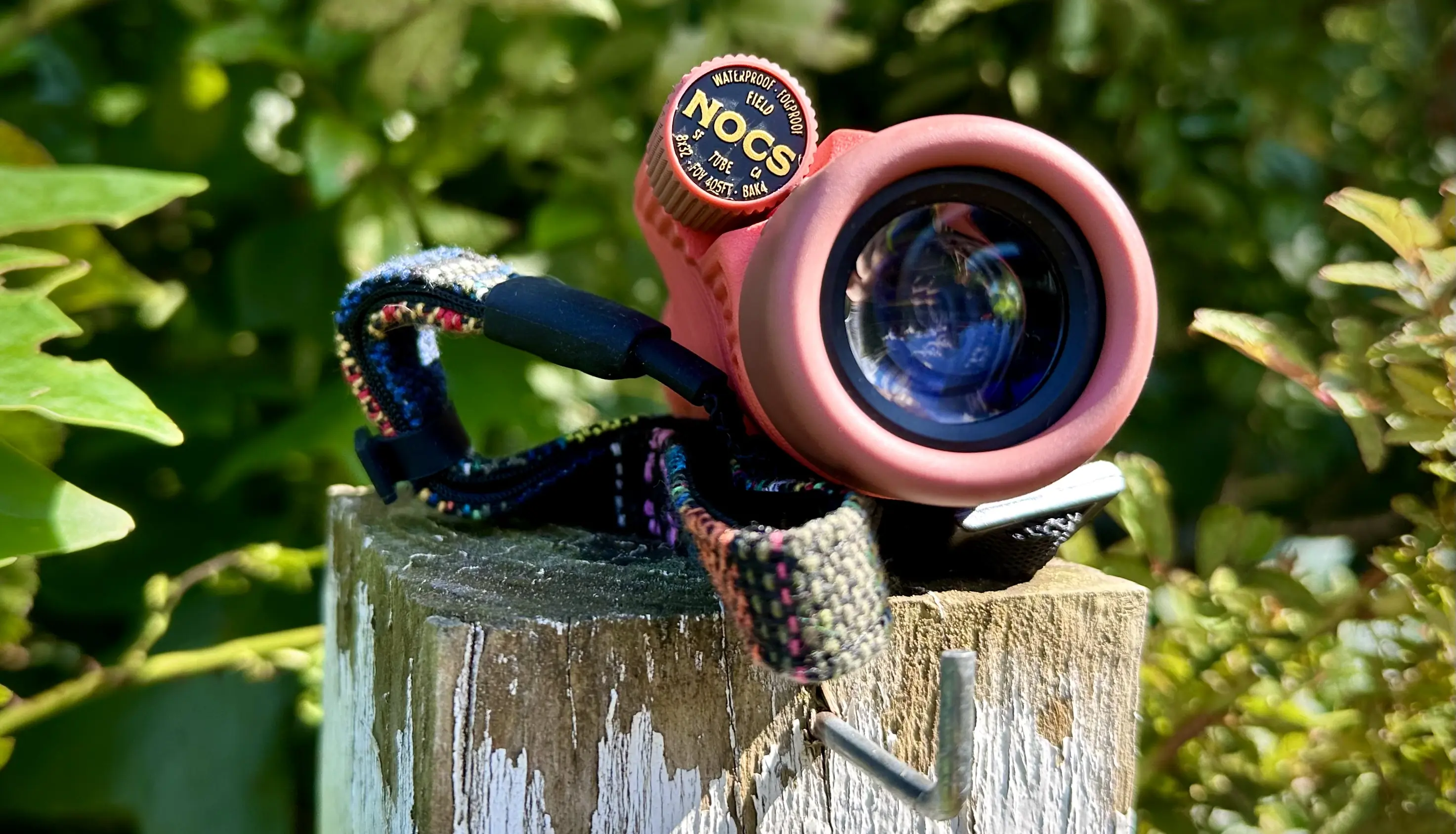



There is no one right answer to this question. It all depends on how much and for what you plan on using them. But generally, binoculars aren’t cheap.
Brands like Nikon and Maven offer glassing solutions that range from $250 to $1,000. Newer brands like NOCS Provisions, whose top-of-the-line Pro Issue binoculars are $300, also offer glassing solutions.
But that’s why we make guides like this — to show you what we found out during our in-depth testing process and help you find the right binoculars for you.
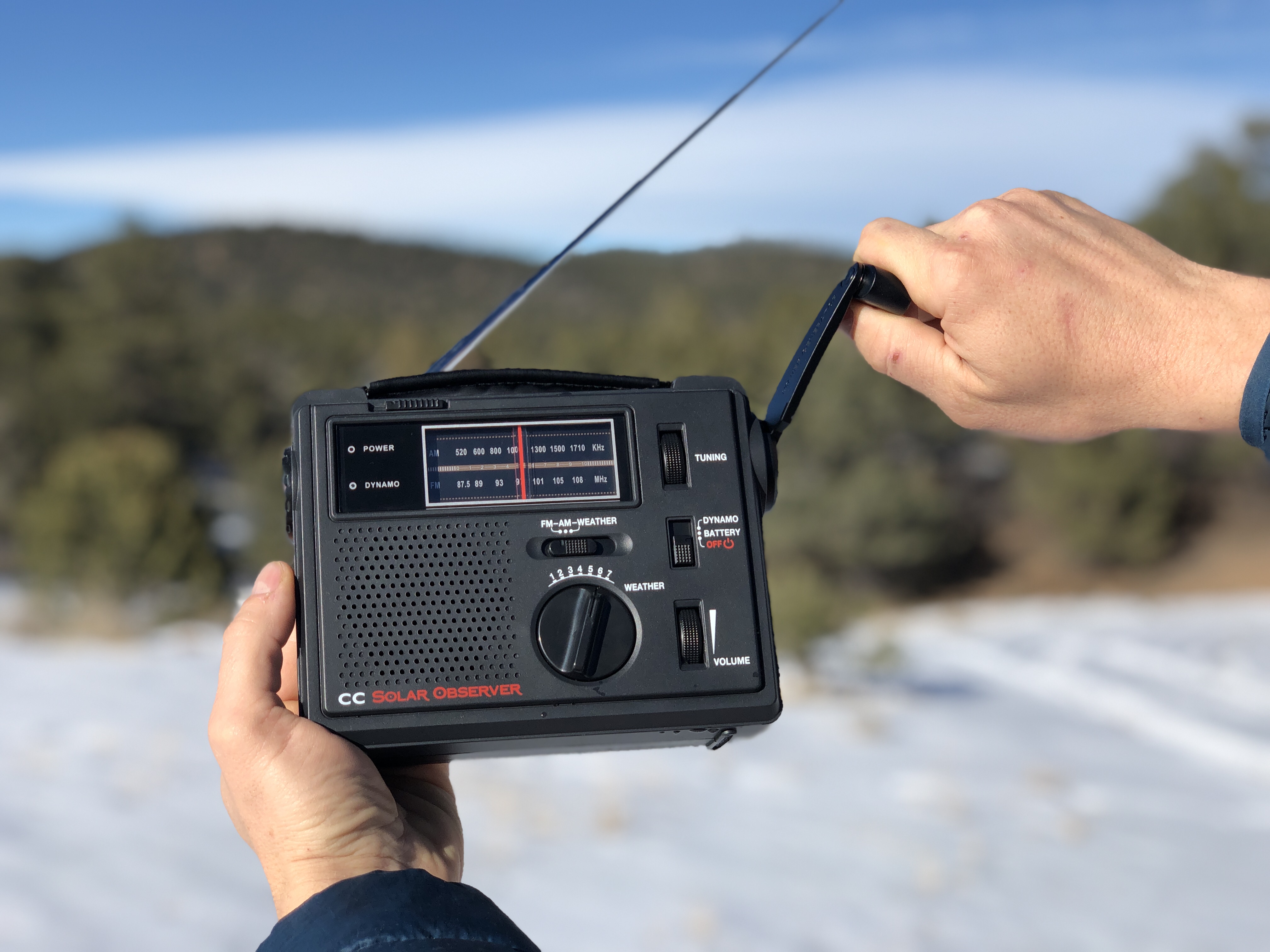

The Best Emergency Radios of 2025
Whether you’re out of service range or out of power, these emergency radios will provide the necessary resources to keep you safe. Check out our top picks from Midland, C Crane, Eton, and more.
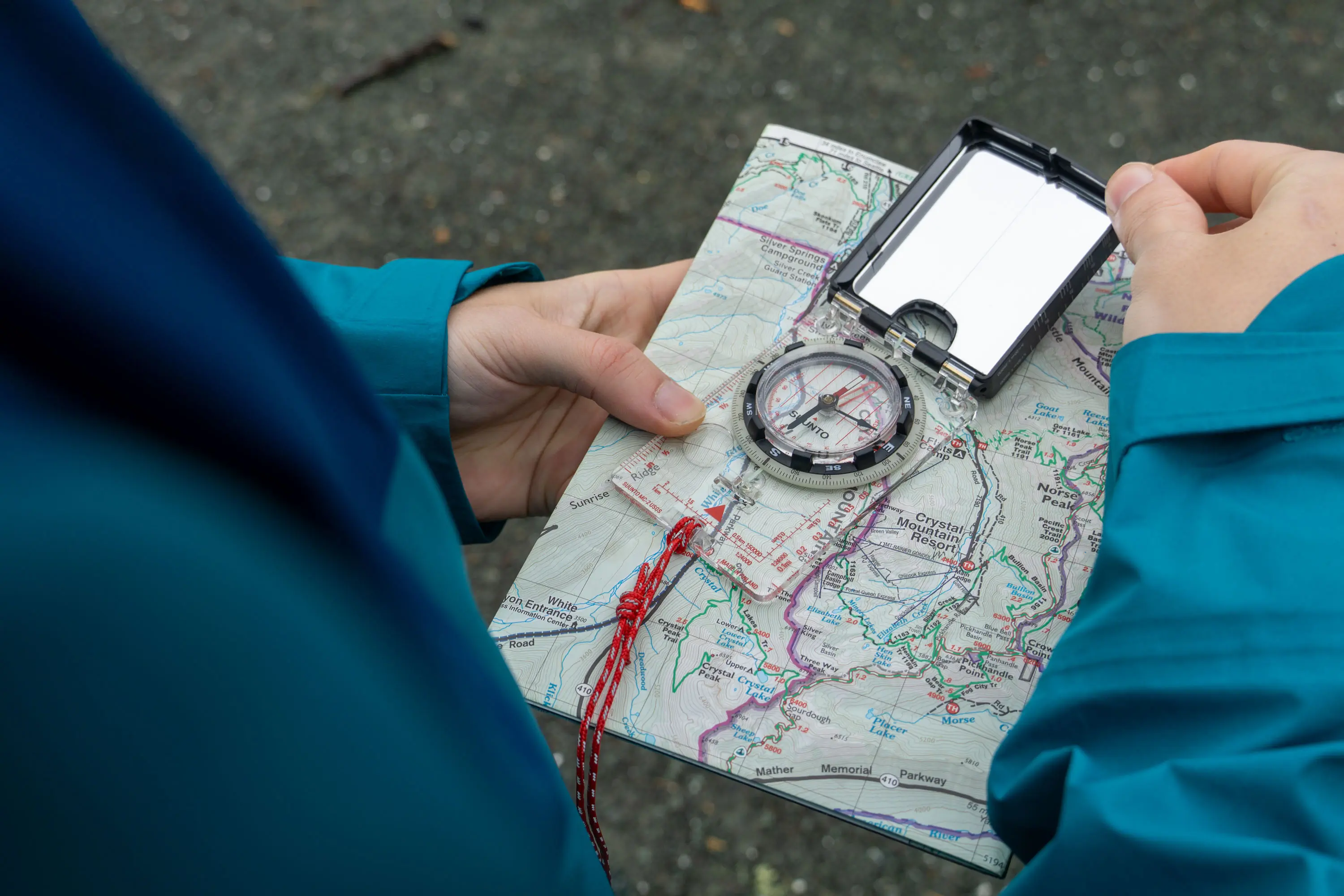

The Best Compasses of 2025
We tested the best compasses from Suunto, Coghlan, Brunton, and more to help you find the best option for your needs and budget.
